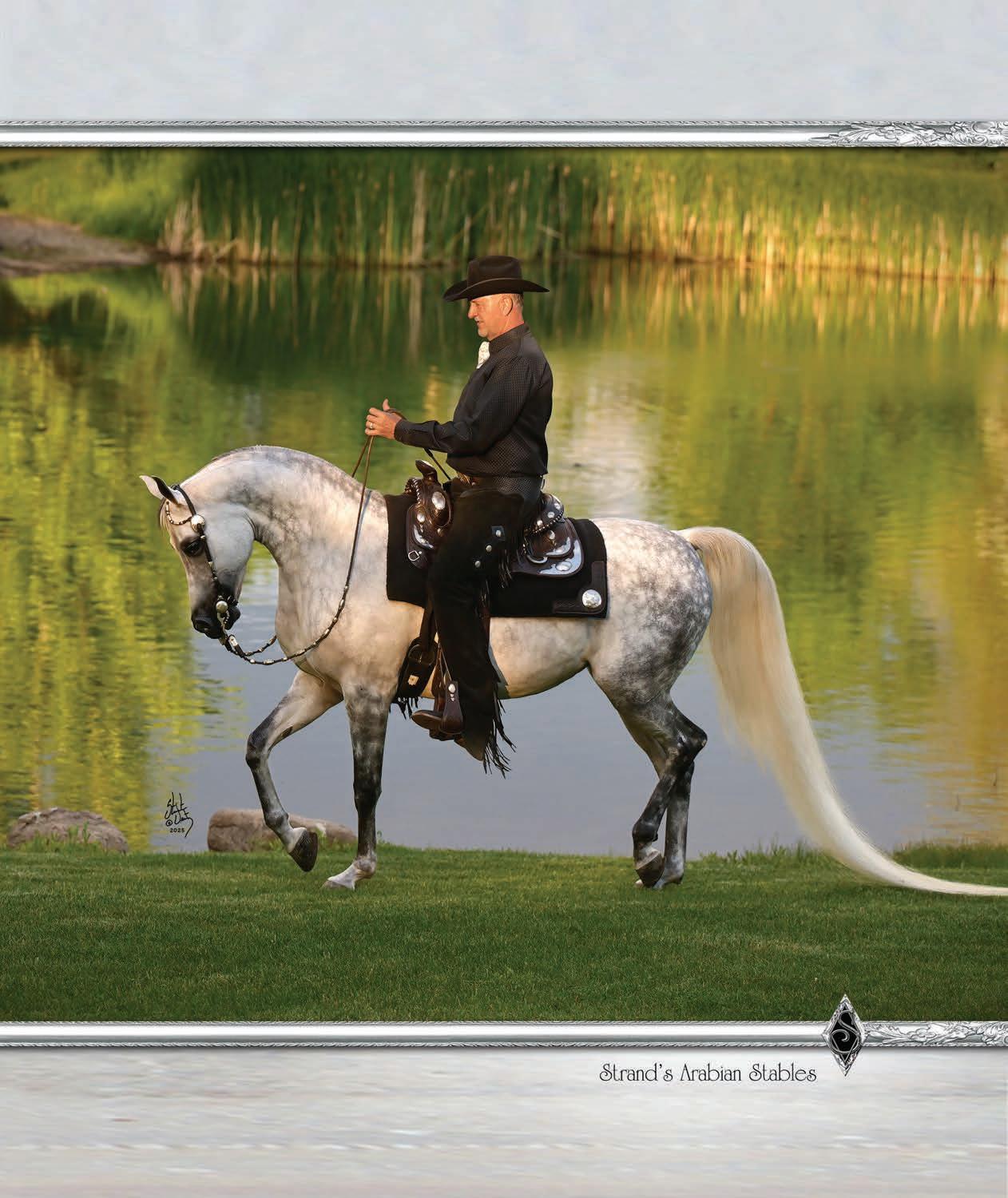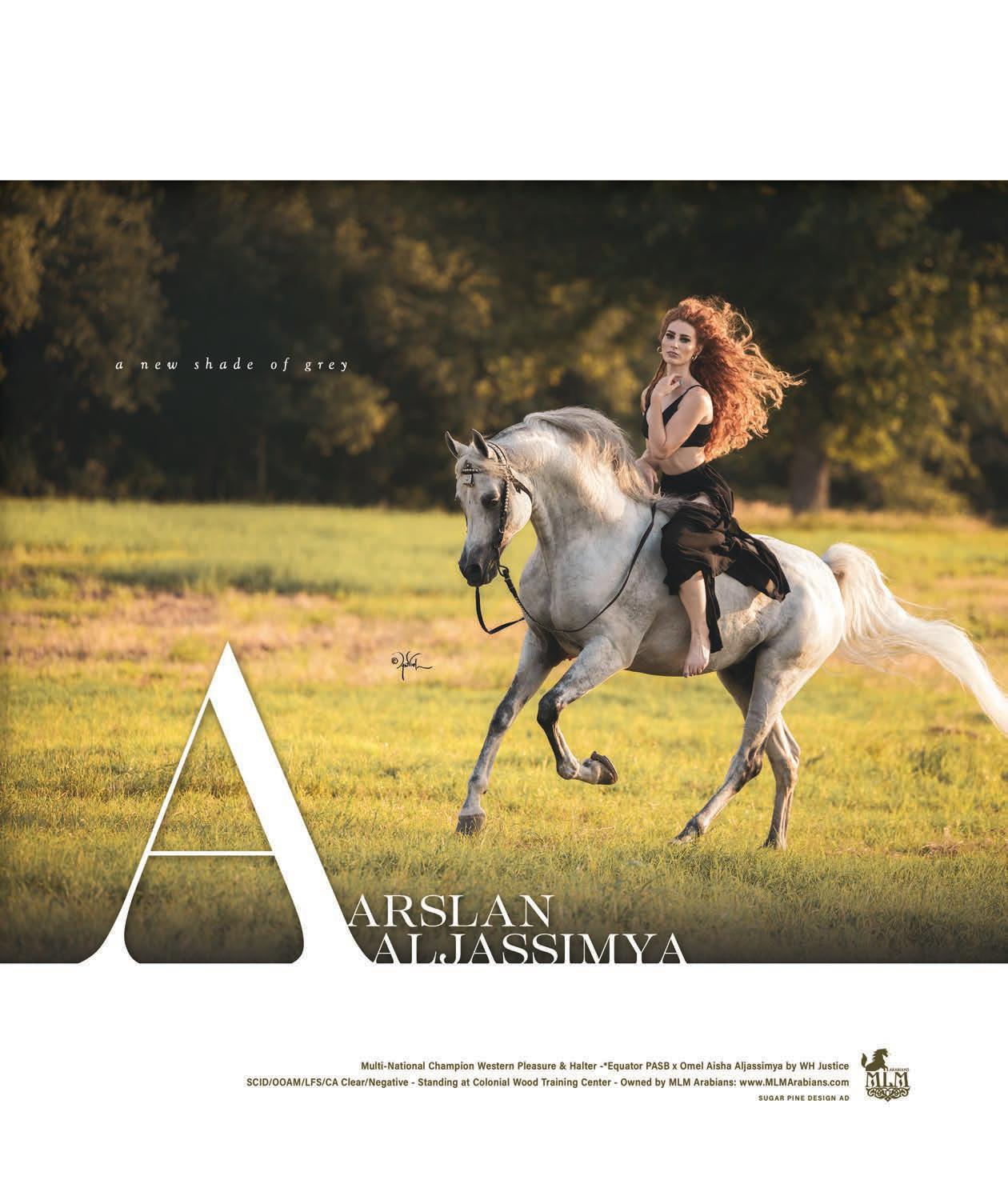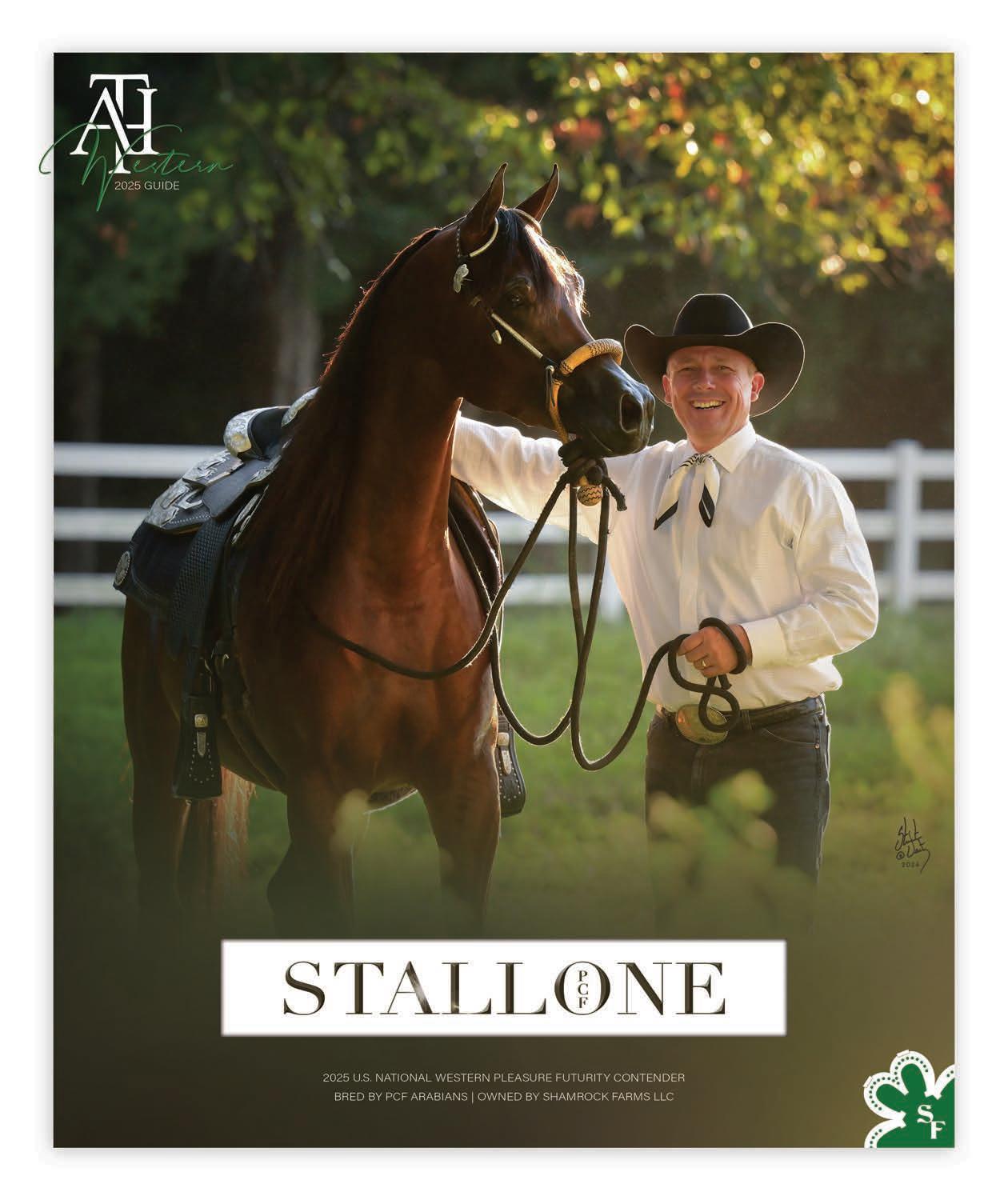
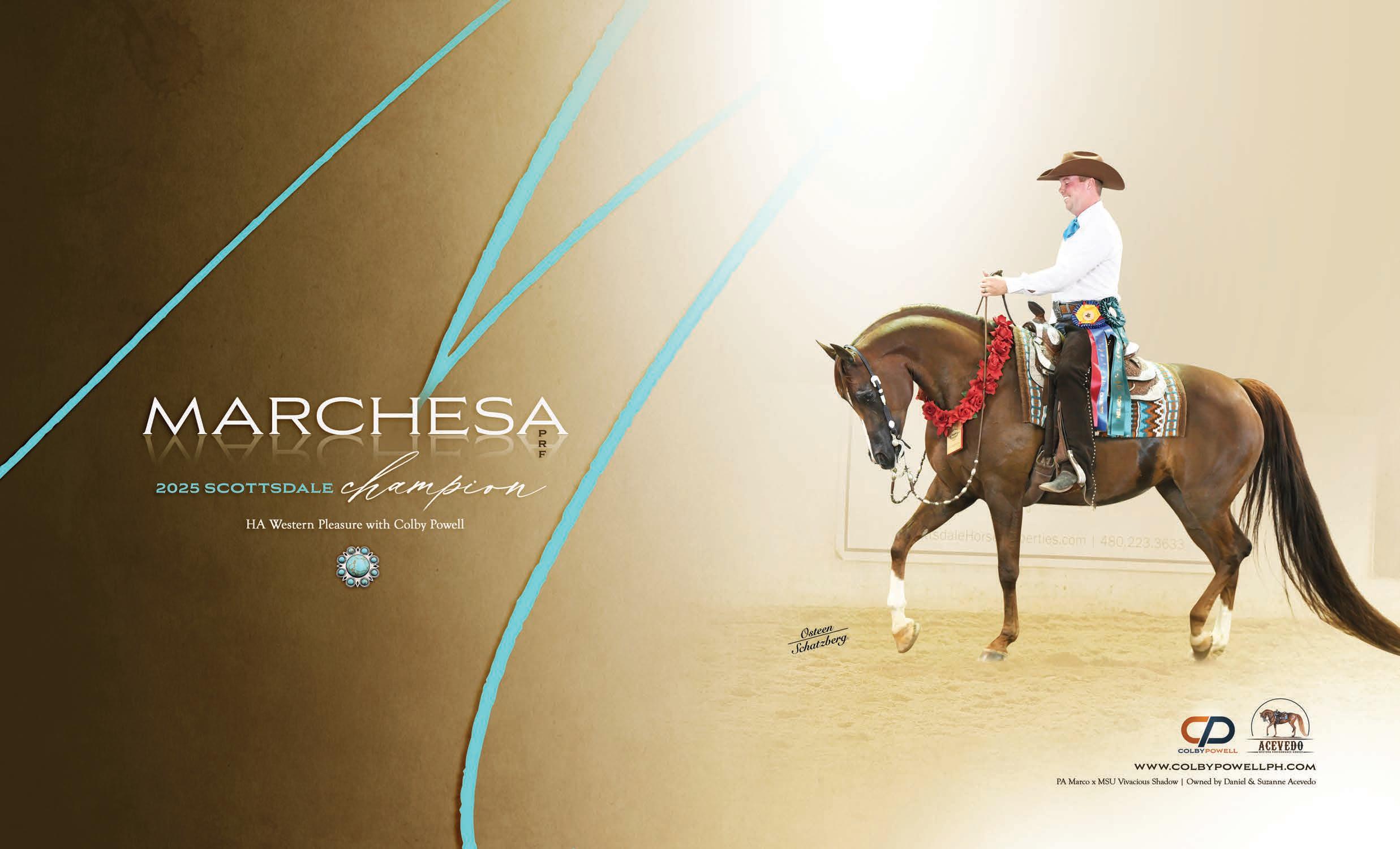

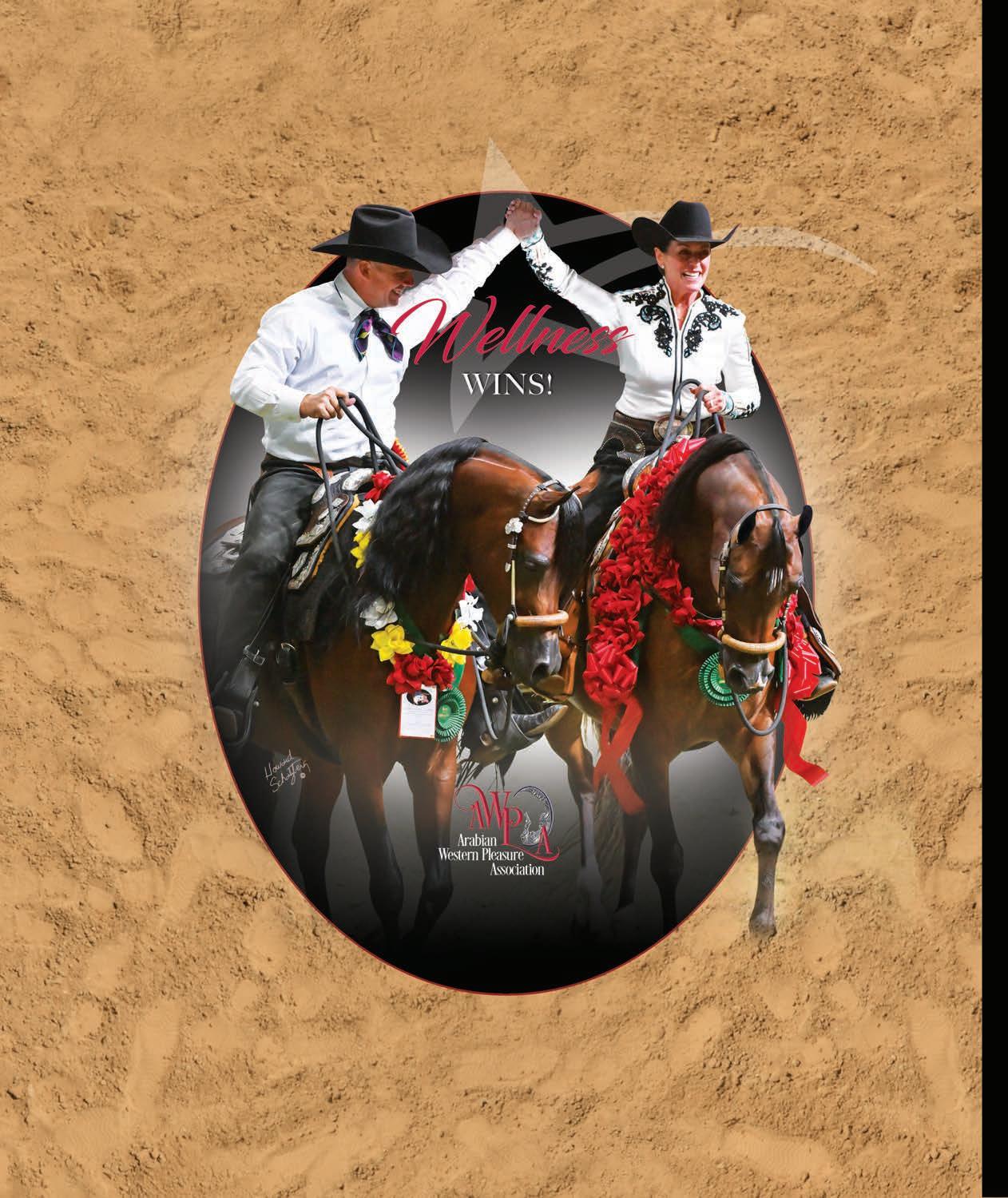
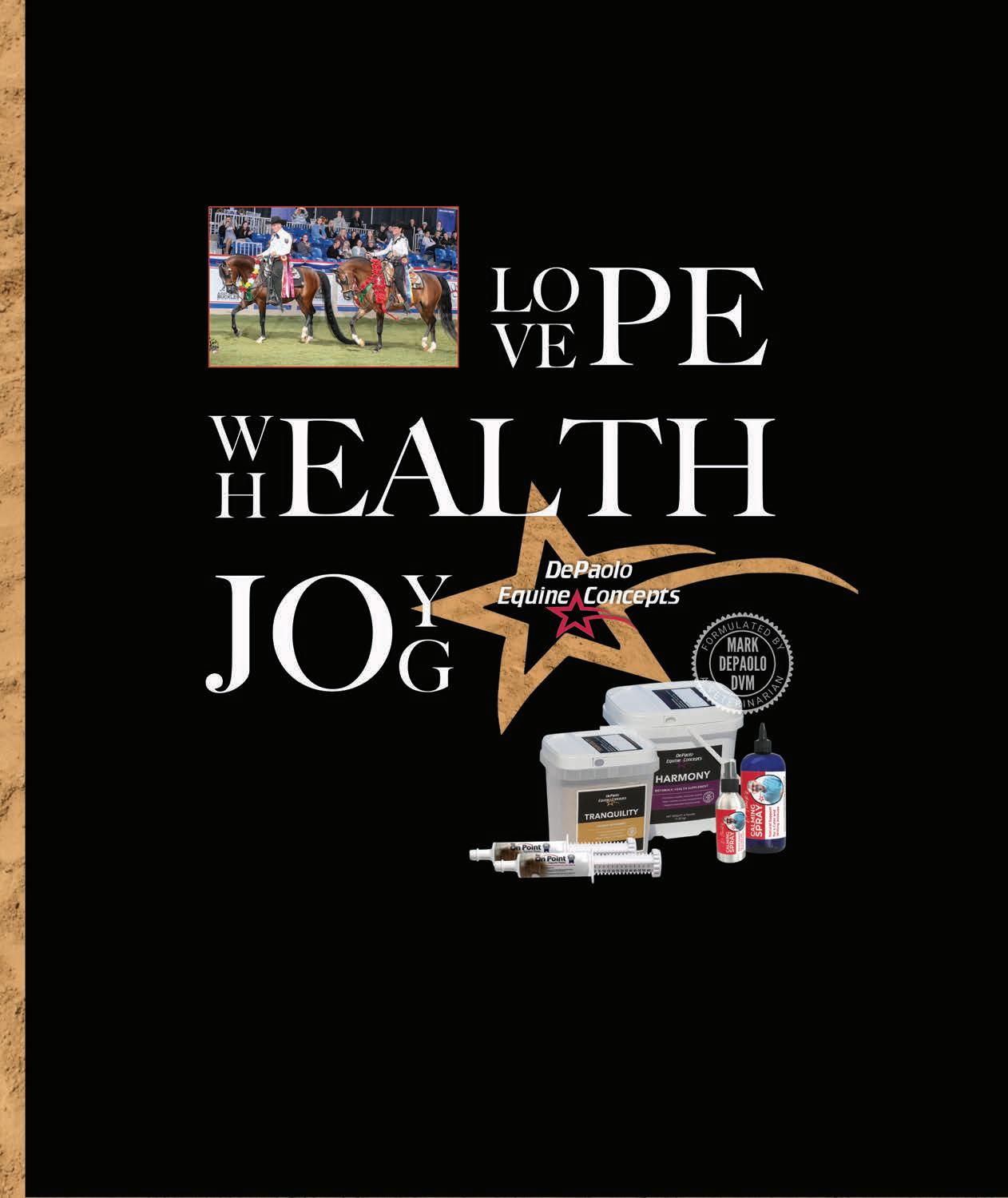

Dedicated

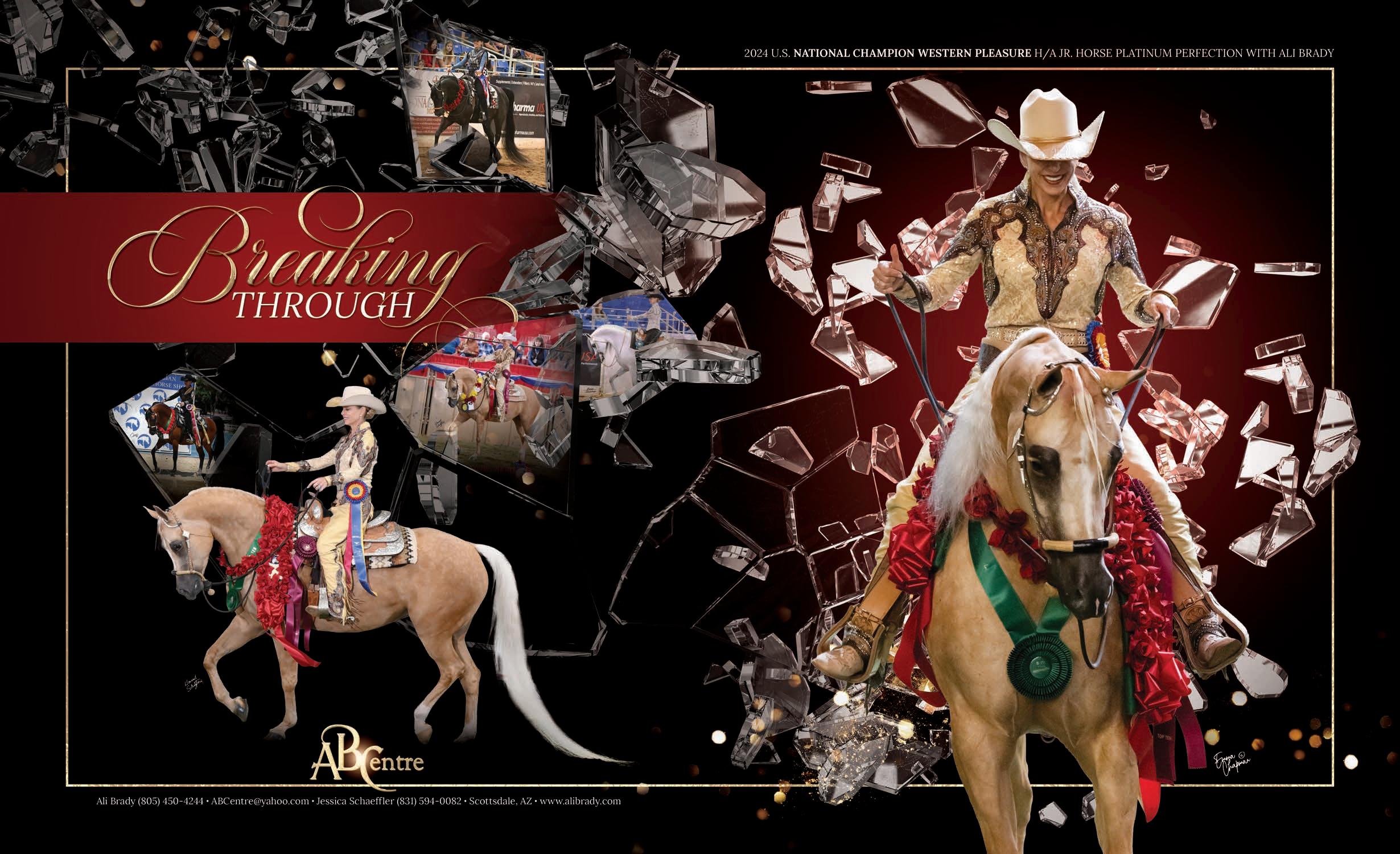

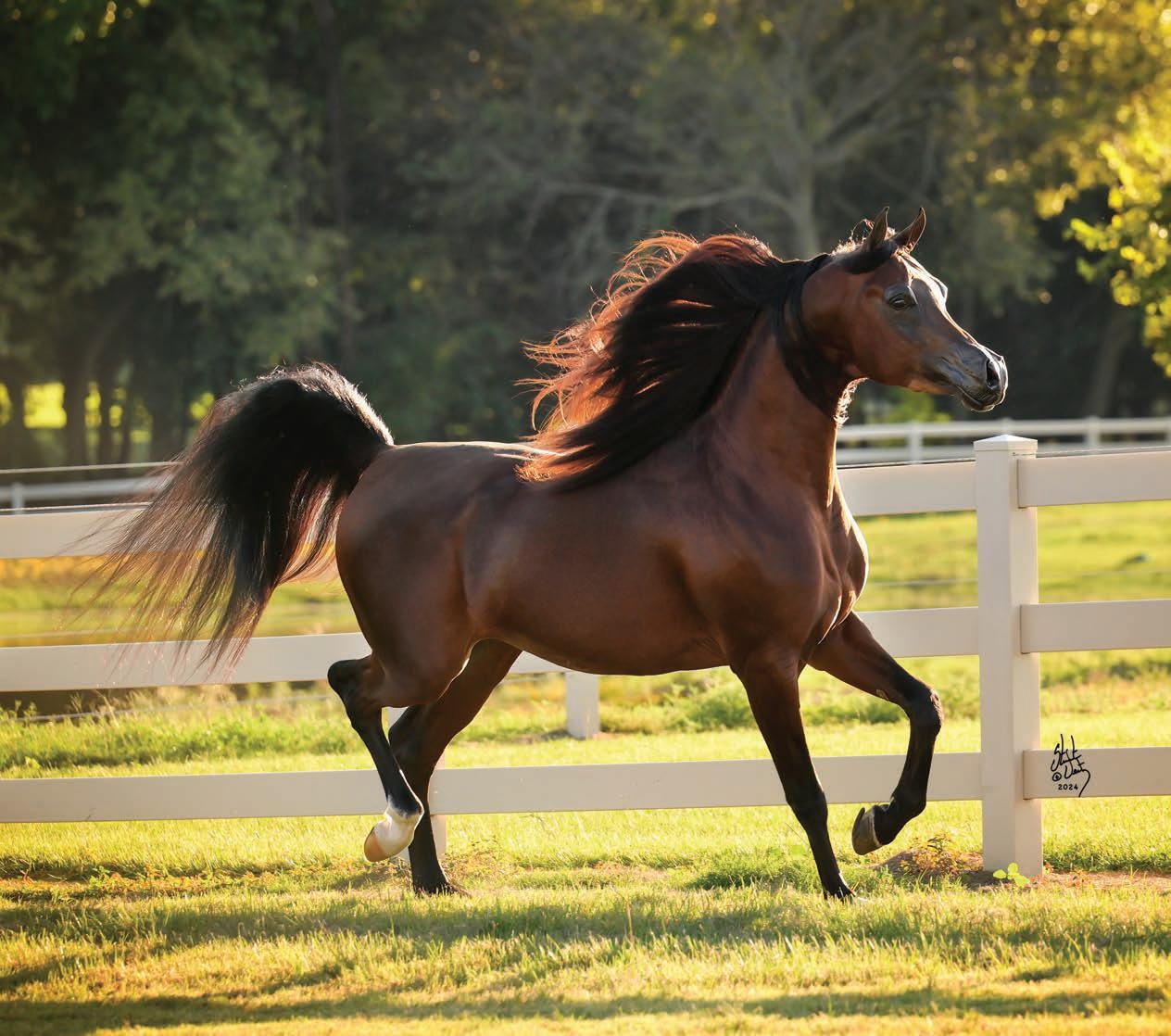
by COLLEEN SCOTT







Dedicated




by COLLEEN SCOTT
As a second Rocky statue was unveiled in Philadelphia on the “Rocky steps” in December 2024, Sylvester Stallone famously said:
“ is statue represents everything that the Rocky lms stand for: resilience, heart, and the unbreakable bond between Rocky and the people of Philadelphia.”
e same could be said for the stallion Stallone PCF, alongside Leslie Doran Sommer, Carrie Fritz, and the entire Shamrock Farms team, all representing the very essence of the farm: unwavering dedication, a deep love for the magni cent Arabian horse, and the profound bond between horse and human.



When Shamrock Farms lost 3-time U.S. and 2-time Canadian National Champion Monaco Jullyen V (Jullyen El Jamaal x Misti Morn V) in 2021, the entire team was devastated. He was irreplaceable and left a void that could never truly be filled, but after a years-long search, Leslie, Carrie, and trainer Joe Reser identified Stallone PCF (Dominic M x CW La Stella) as a stallion with the remarkable potential to come closest to filling the immense hoofprints left by Monaco.
“Can lightning strike twice?” asks Carrie rhetorically. “Maybe.”
Long-time friend Koy Moody, whom Carrie fondly calls “the daughter Leslie and I never had,” brought Stallone to the sisters’ attention in the fall of 2023. She shared a video of the 2022 colt, accompanied by glowing praise. Stallone nailed the Arabian Stallion Breeding class at Scottsdale in 2023, but it seemed like he was already looking ahead. He never stood quite like that again, almost as if to say, “Okay, I won that, what’s next?” Koy encouraged the sisters and Joe to visit the horse in person.
“His focus in the round pen was solely on loping,” Carrie notes, suggesting a natural inclination that bodes well for western training. What Leslie and Joe saw, left them enamored. “As soon as I laid eyes on him, I knew he was special,” says Joe. “All of the horses I’ve shown have been special in their own way, including Monaco. And sometimes you are lucky enough to find another one that’s just a little better than the others.”
A lunch conversation between Joe and Leslie proved decisive. By the end of the day, Leslie was the owner of a new horse and Shamrock Farms had a new stallion.
Since arriving in Texas, Stallone has proven he’s even more than what the team originally hoped for.
According to Joe, who is getting Stallone ready for the western futurity at U.S. Nationals this year, he’s got a calmness in his eye, a look of confidence about him and is a beautiful mover. “He reminds me of Monaco when he was this age,” he shares.
Leslie is thrilled with Stallone. “He has this look about him. He’s all we had hoped for and more. He has a great attitude, is sweet, polite, mannerly – all the things.”
She credits Sam Peacemaker and Carlinhos Souza with giving the stallion a great foundation. “He’s so easy-going and well-mannered, you can tell he was handled the right way from the very beginning. That’s so very important.”
For now, Leslie and Carrie are enjoying getting to know Stallone better and watching Joe work him. Leslie plans to start showing him after his junior horse year and can’t wait for her turn in the saddle.
The countdown to the 2025 U.S. Nationals is underway, and the center ring might want to queue up Bill Conti’s “Gonna Fly Now.” If Shamrock Farms is on the mark about Stallone, expect that Rocky theme to become a recurring soundtrack in Arabian western competitions. n






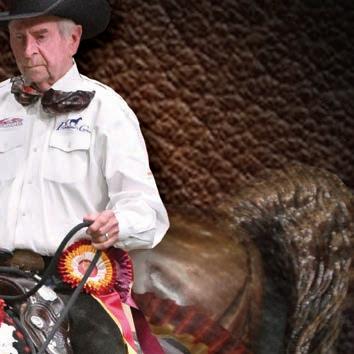
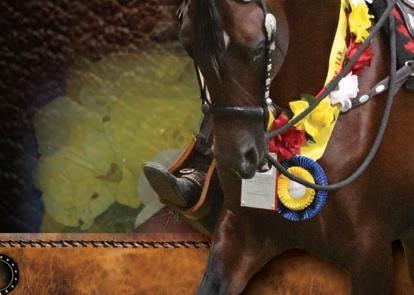
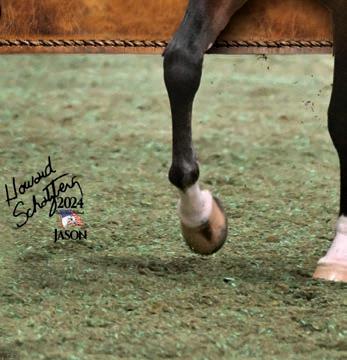

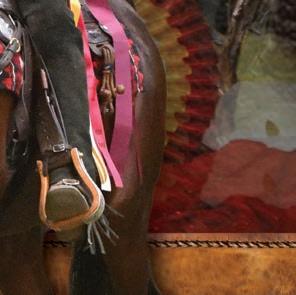



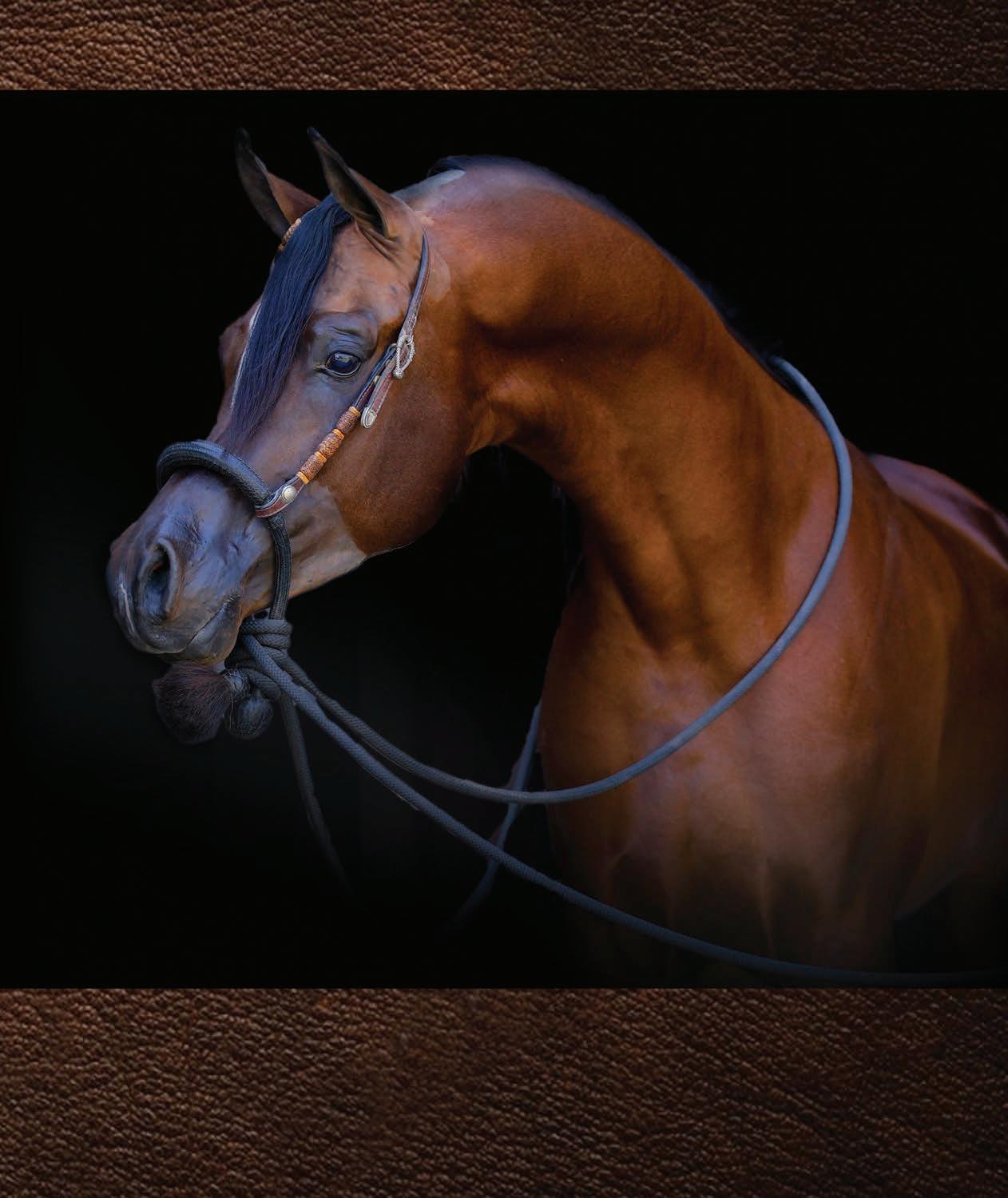
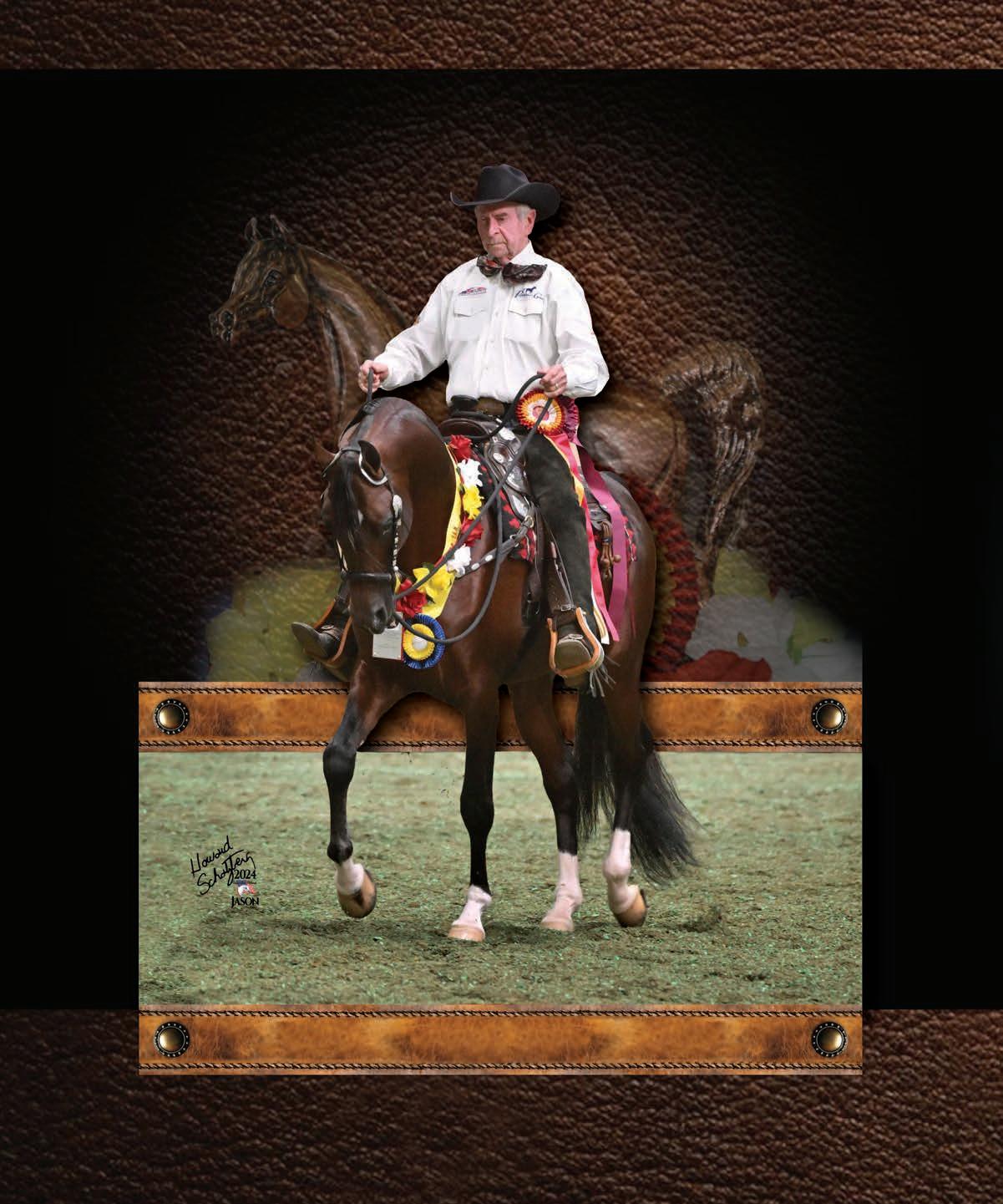
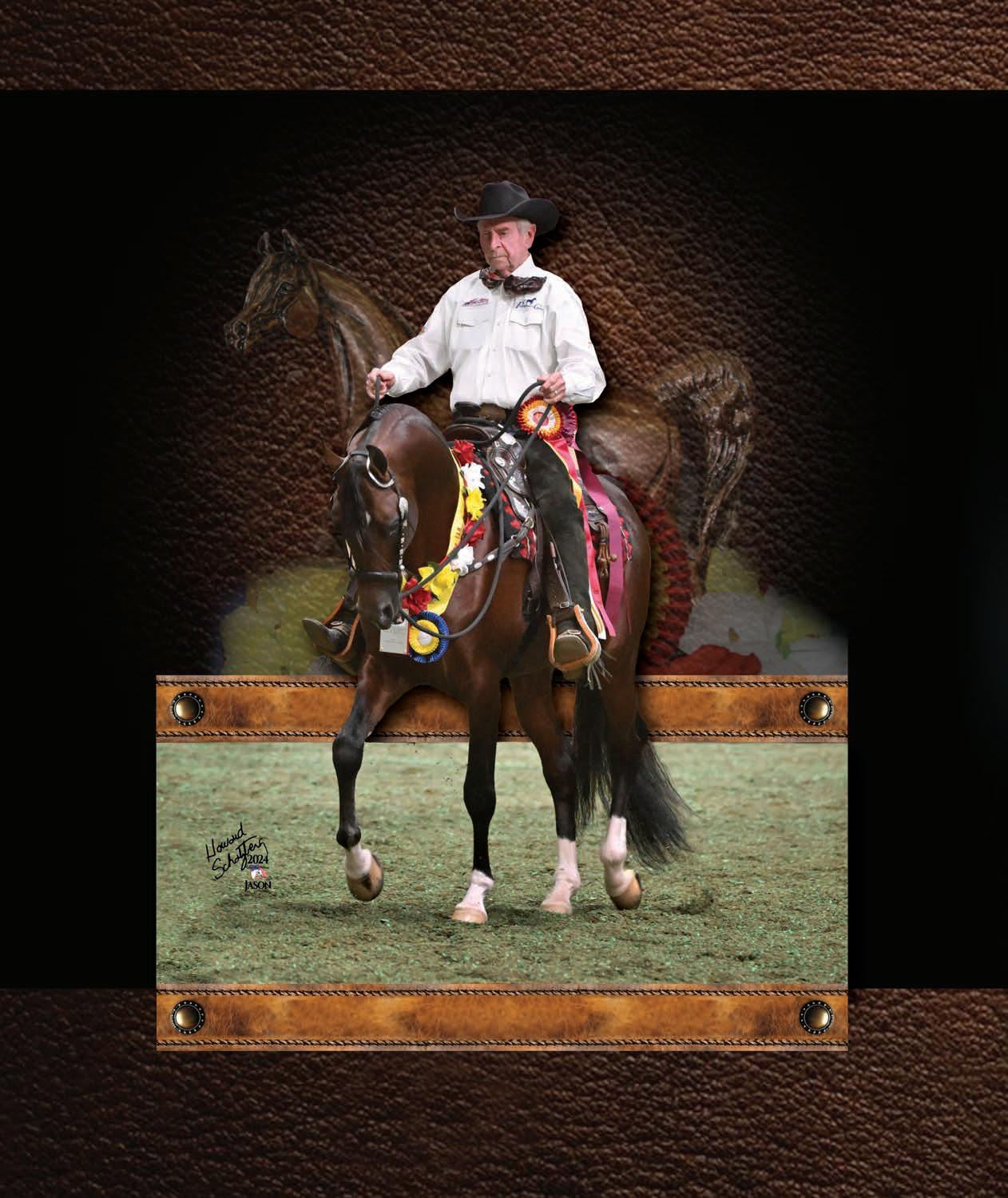






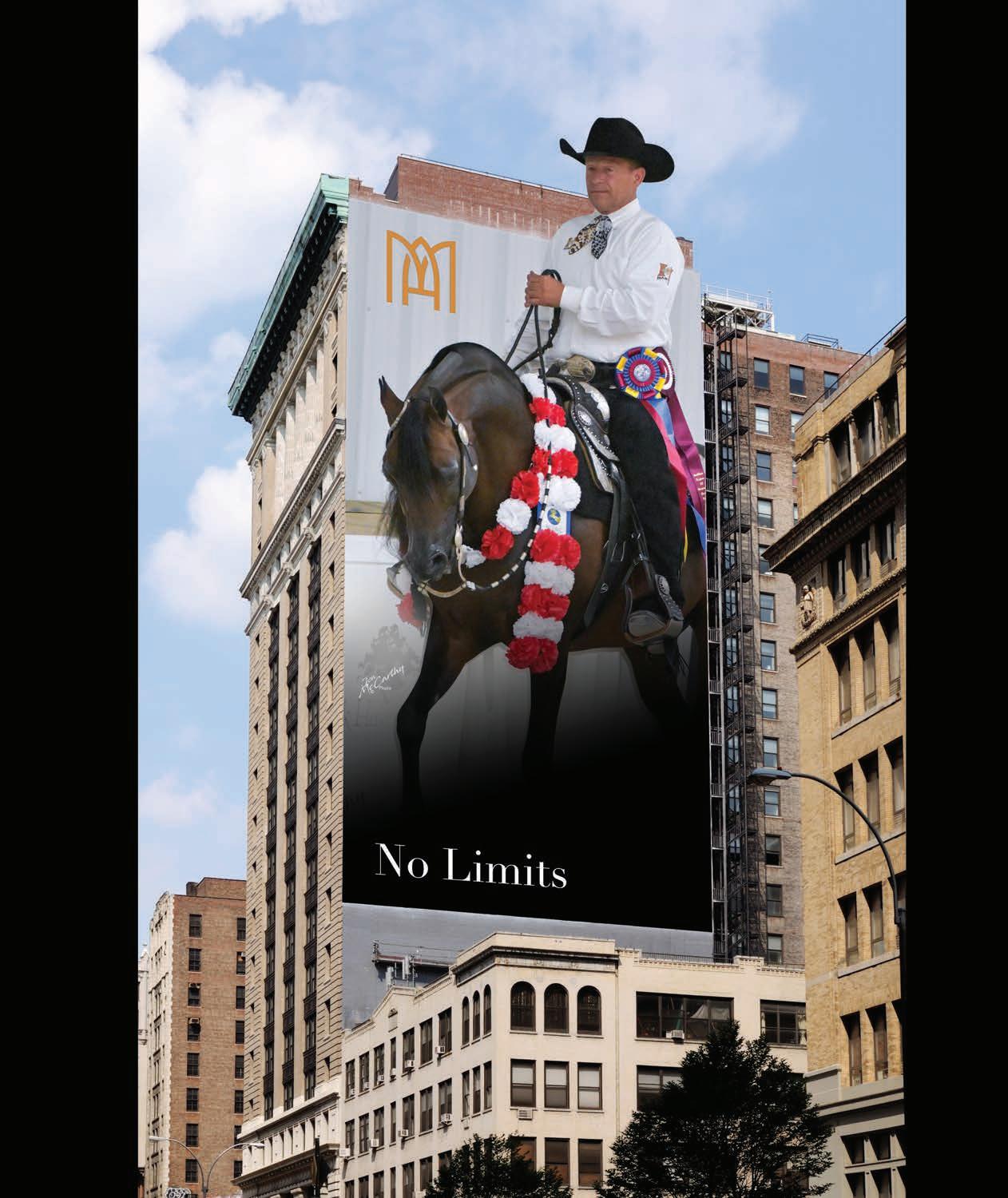



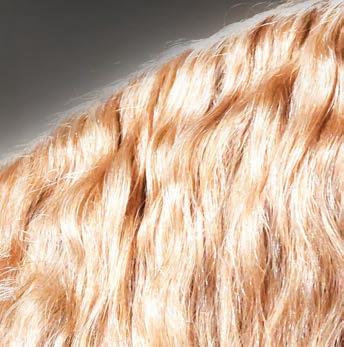
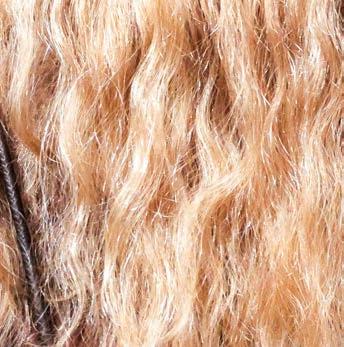
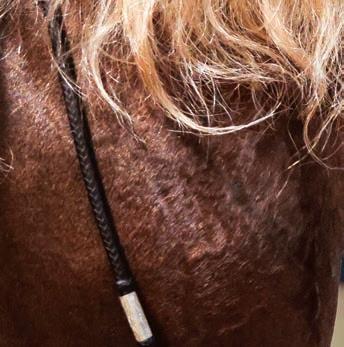

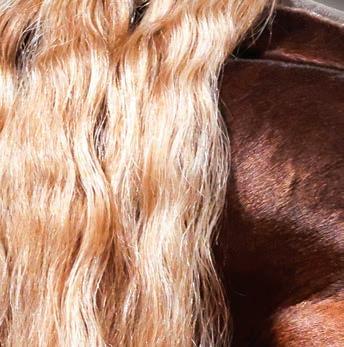


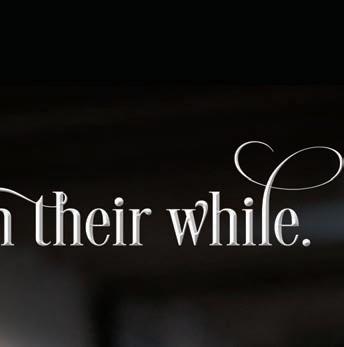
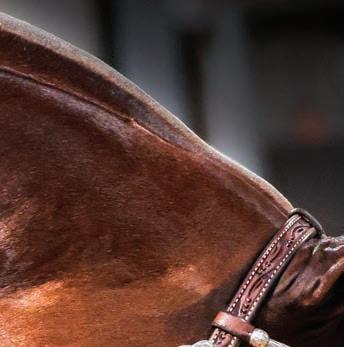
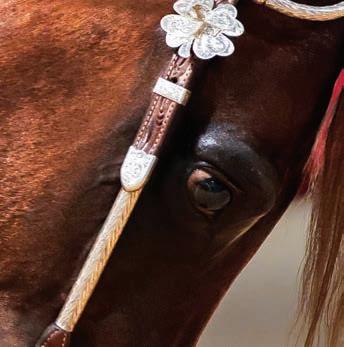




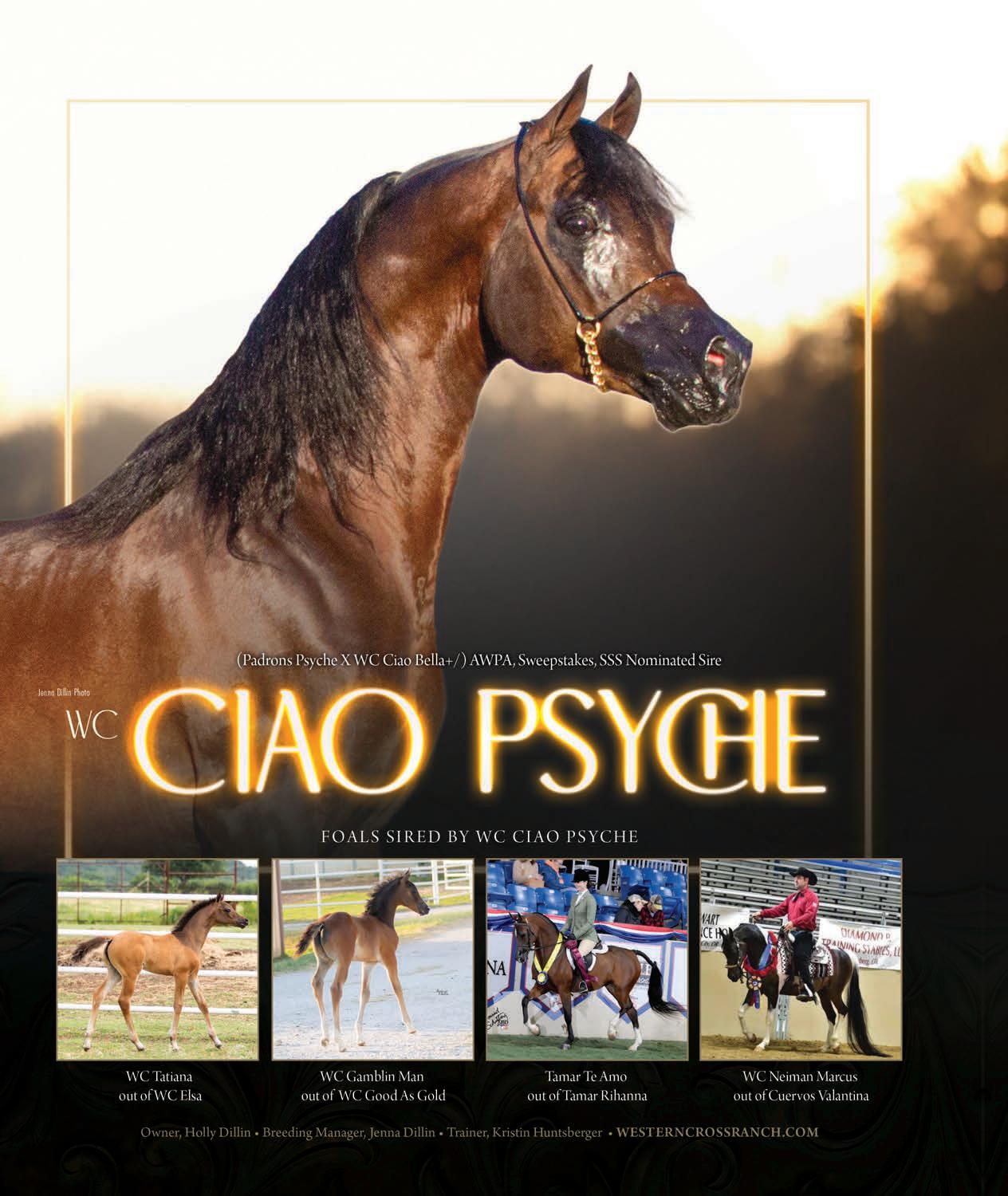
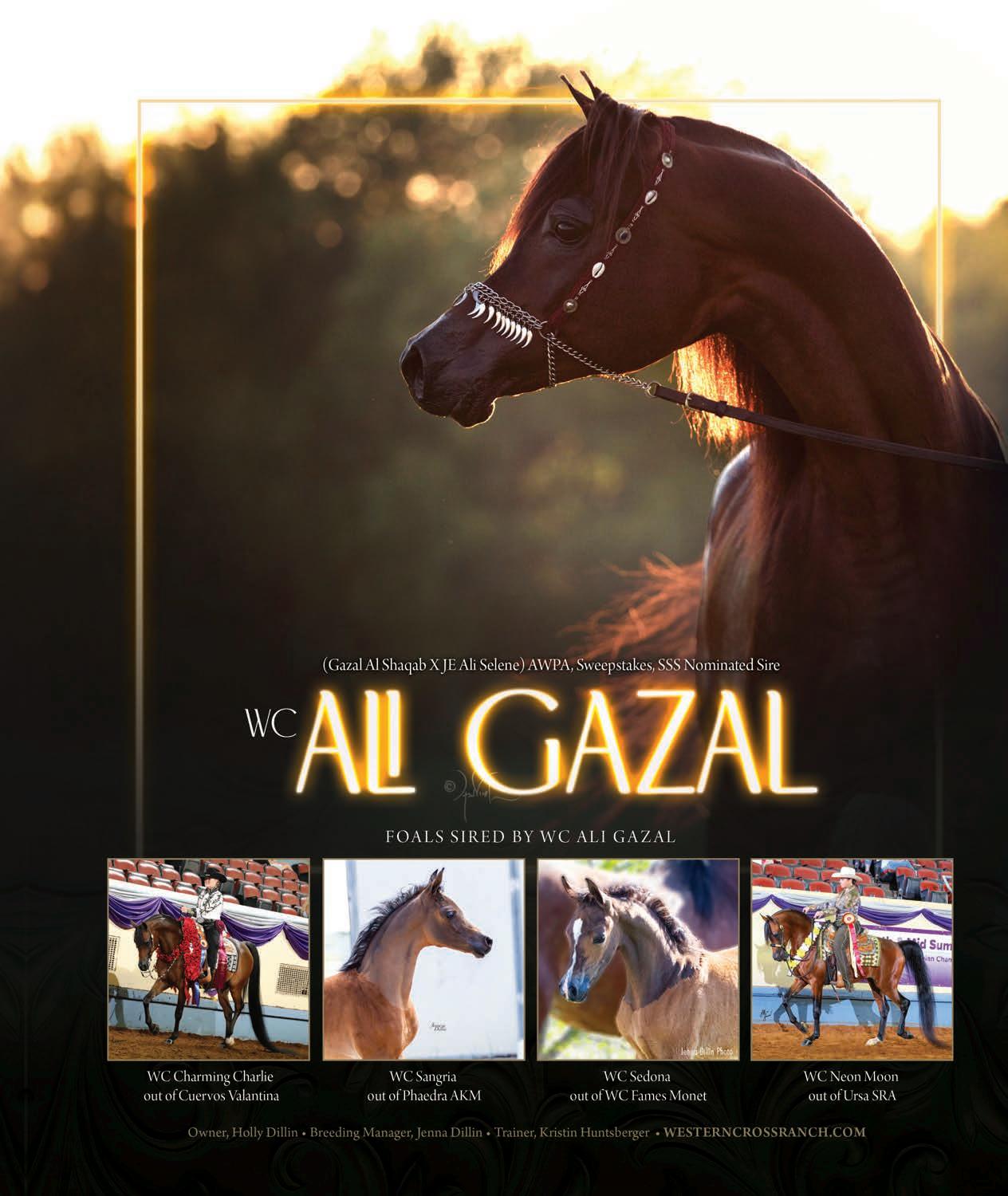
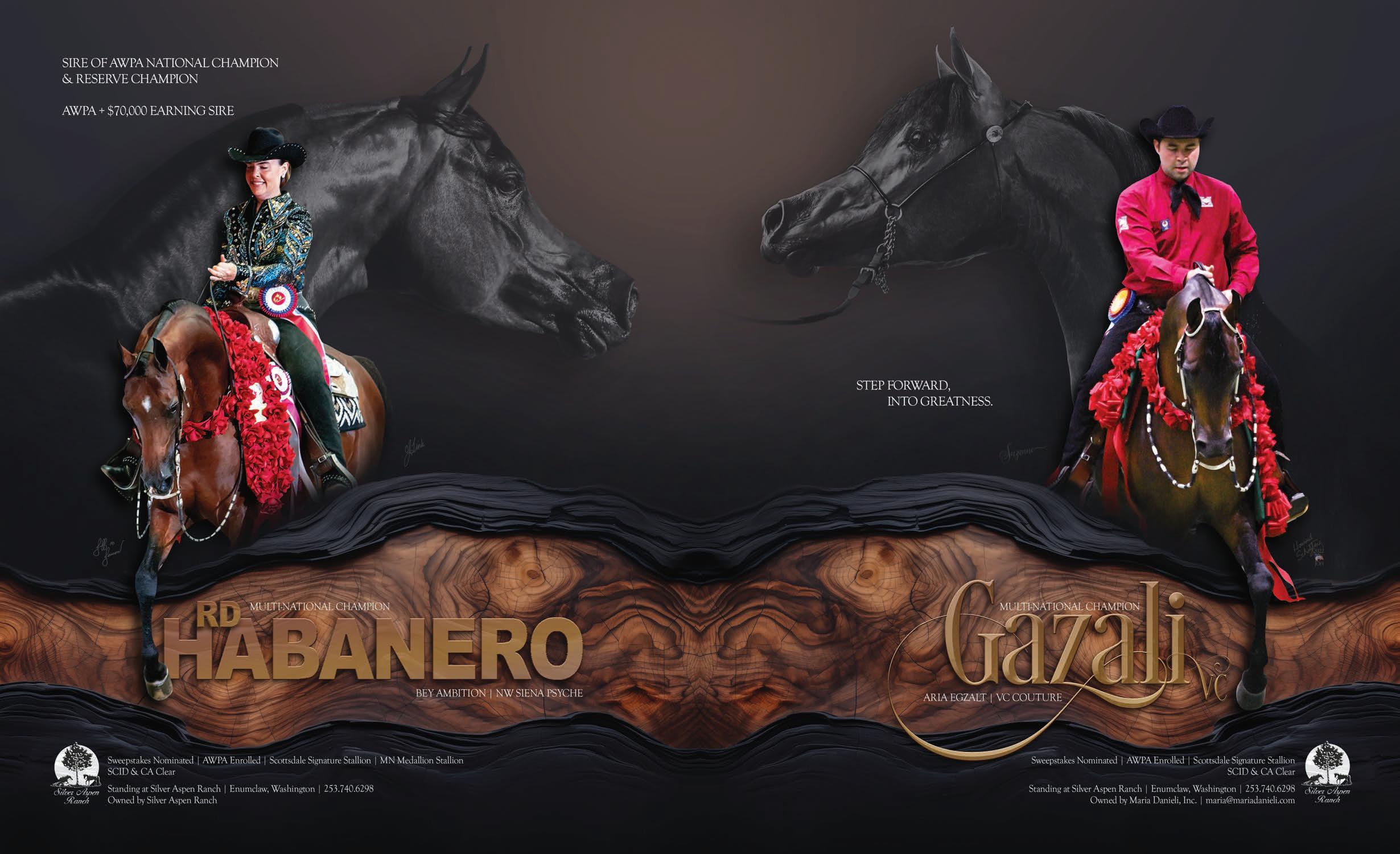
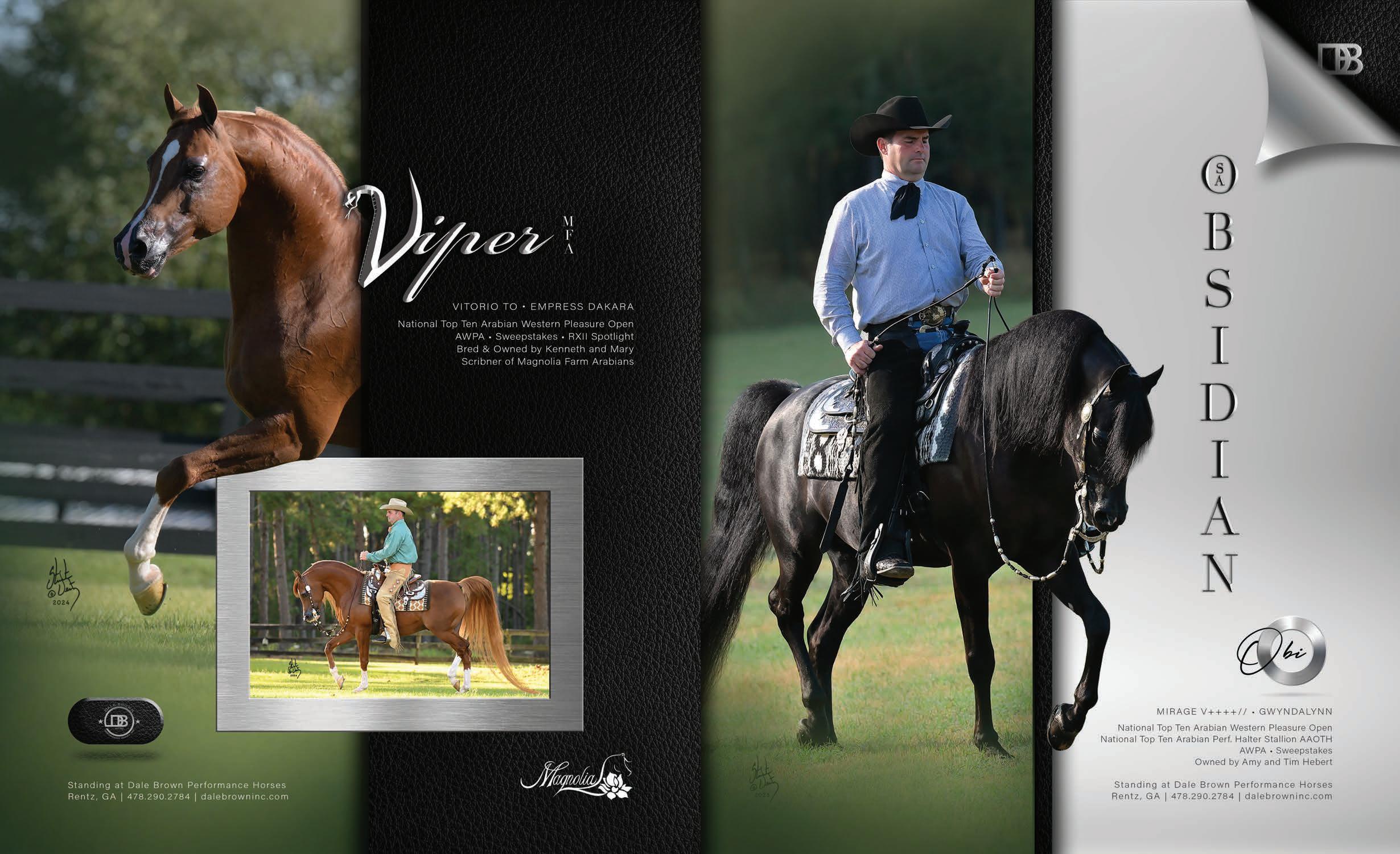


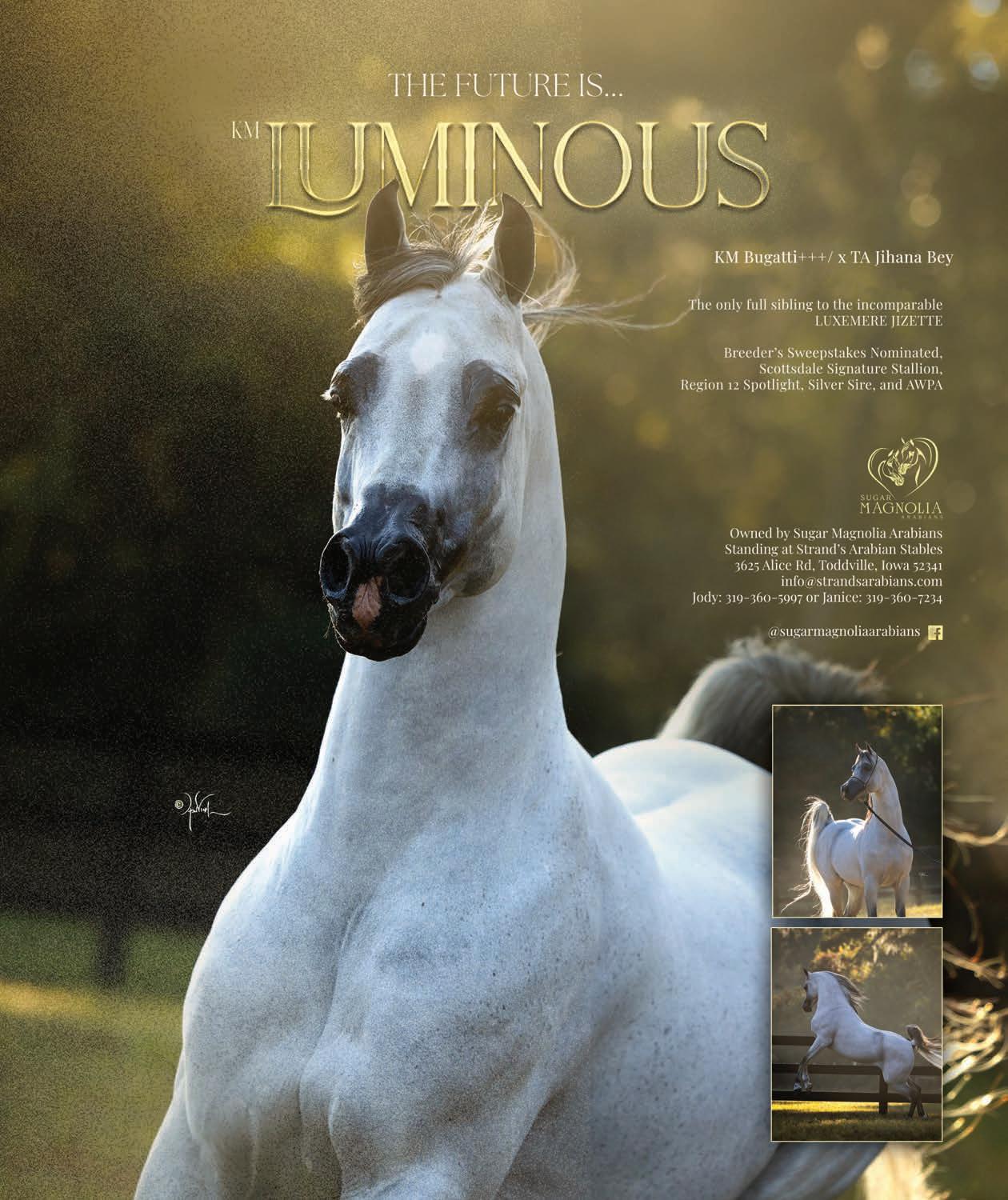
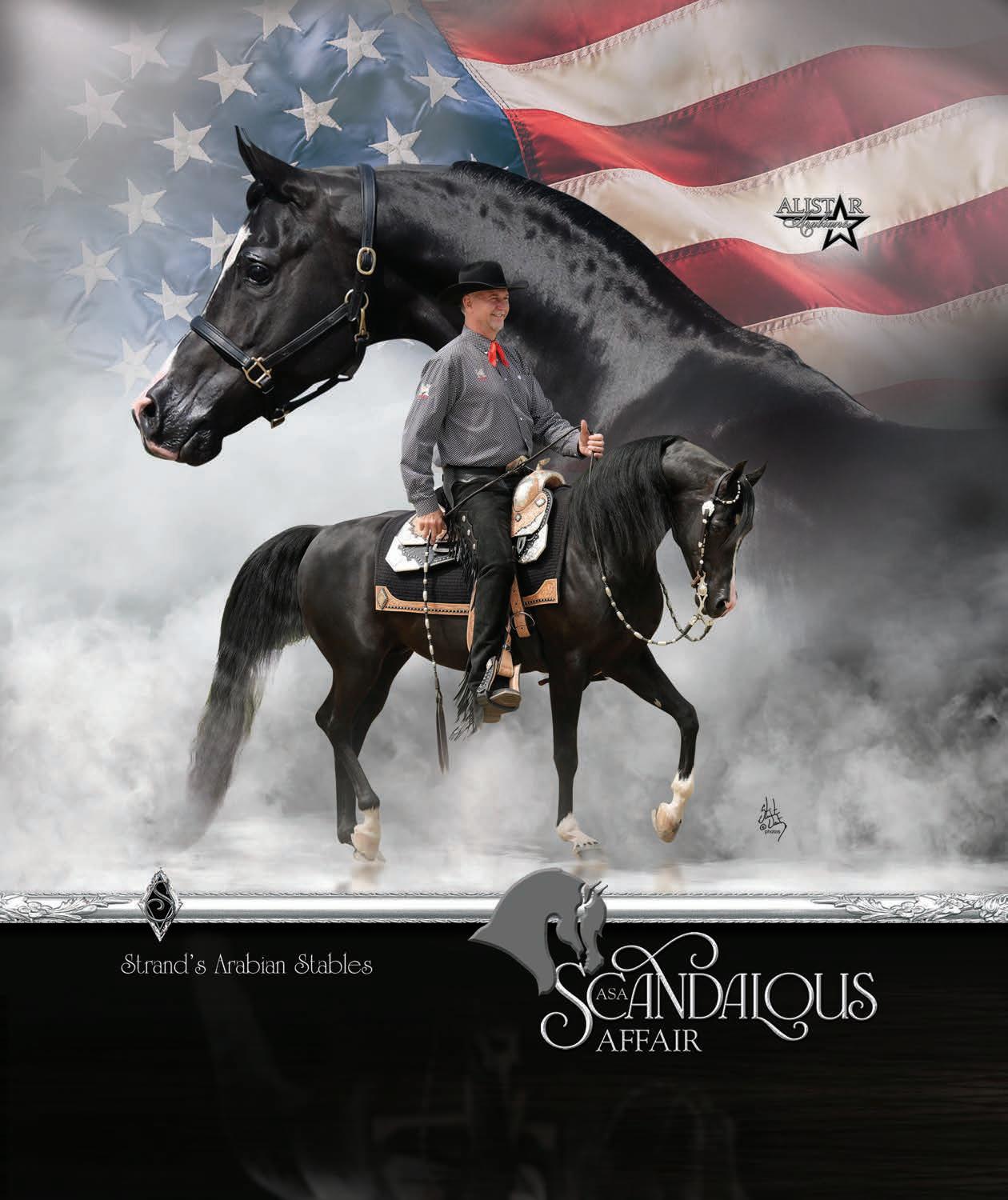
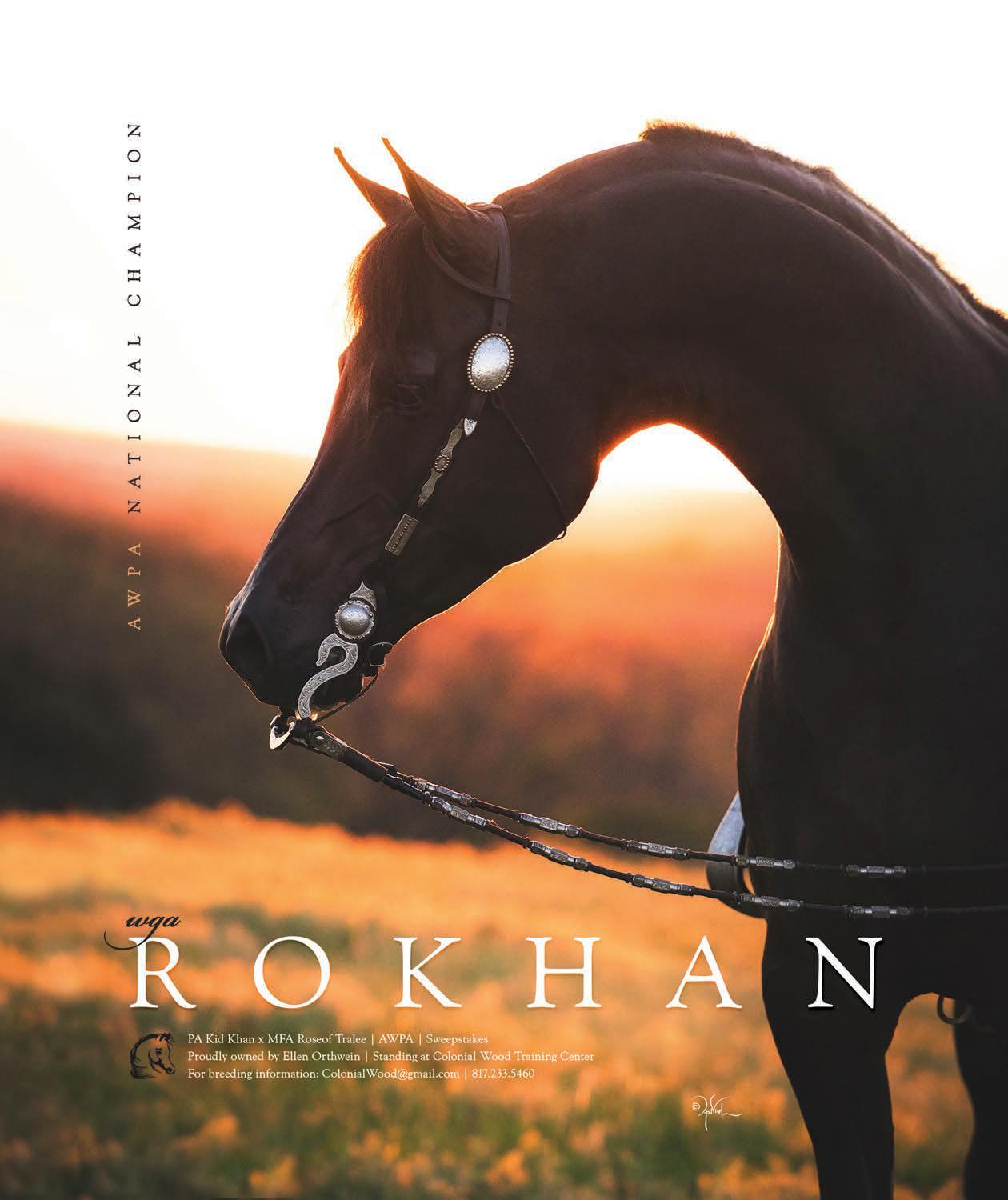
U.S. NATIONAL ENTRY DEADLINE
STALLION NOMINATIONS DUE FOR 2026
MARE NOMINATIONS DUE FOR 2025
WHISKEY ON YOU DLB
2024 AWPA $100,000 Equine Athlete
Half-Arabian Futurity Champion ridden by Stanley White III
INVICTUS A
2024 AWPA $100,000 Arabian Horse Times
Purebred Futurity Champion ridden by J.T Keller

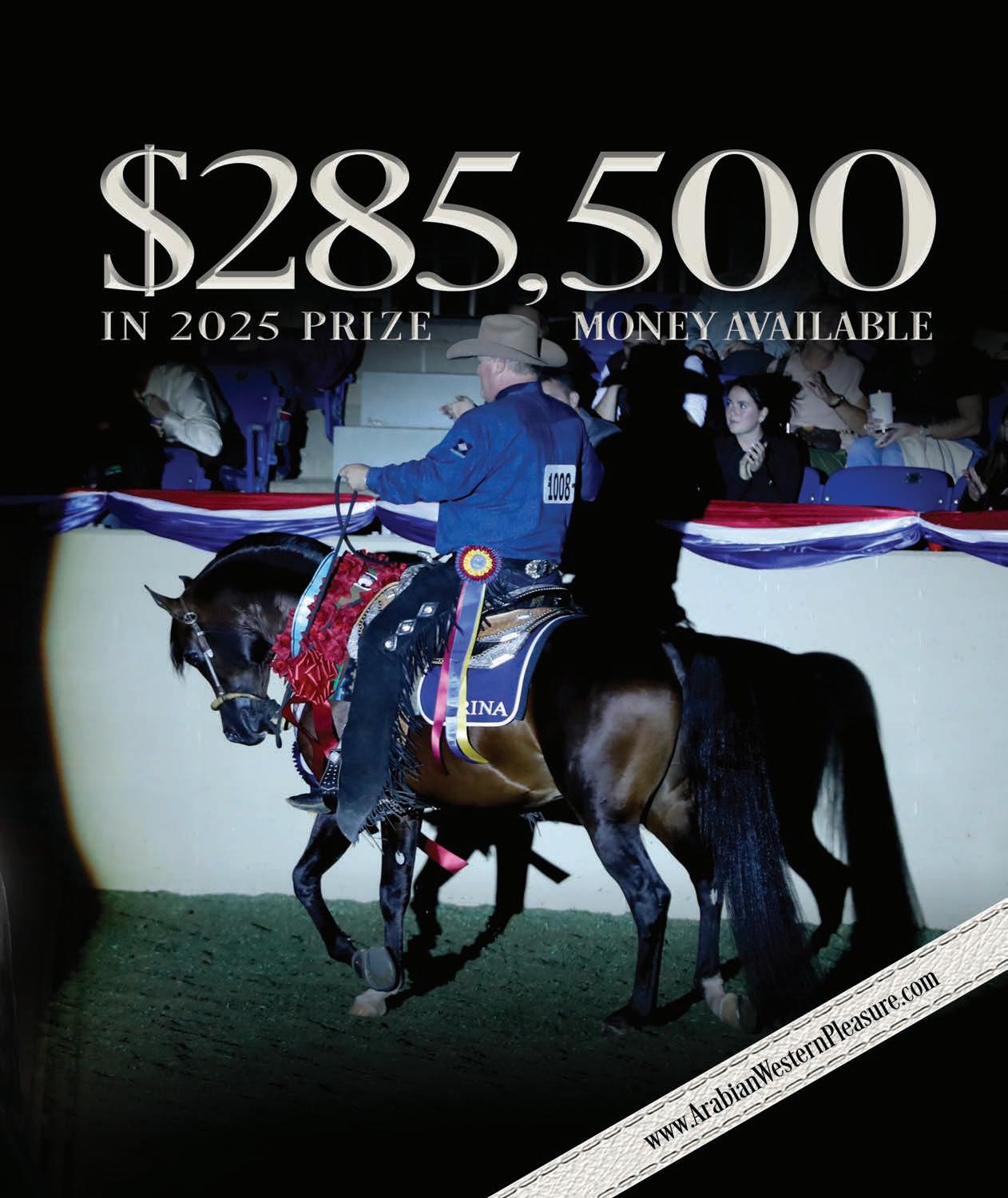





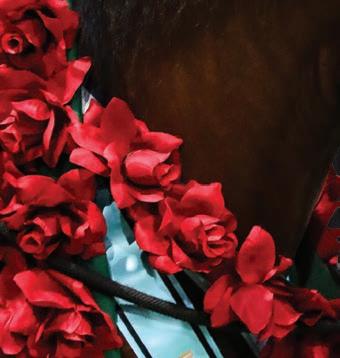
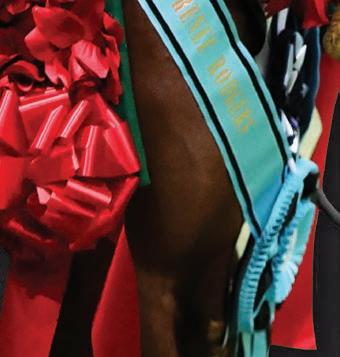




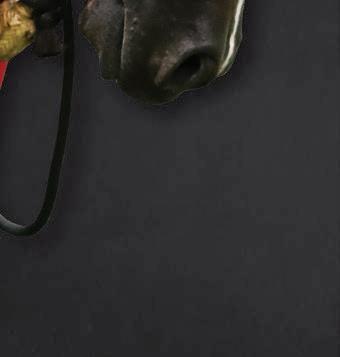


























YEARS INVOLVED WITH ARABIANS: 50






I was about 12/13 years old and had my rst horse (a Quarter Horse mix with no papers). Our neighbor down the street bred Arabians, I started cleaning stalls there to pay for my horse… and while doing so fell in love with Arabians. We bought our rst Arabian from him, a horse with *Naborr bloodlines.
Arabians are the most personable. ey truly engage and bond with their owners. I’ve shown warmbloods and done the jumping circuit… they are amazing horses, but they do not connect to you like an Arabian does. Nothing compares to an Arabian horse. Nothing.




I love their soft easy way of going. Western is relaxed and beautiful, but also a huge challenge to ride with just one hand with a drape, going slow… when you achieve that in the show pen, it is beyond rewarding!!!
A beautiful horse and a beautiful mover. Both traits are imperative with the incredible quality that ourwestern horses possess now. I’m always amazed watching the nals in the purebred open western. Absolutely spectacular horses who are impeccably trained.

FAVORITE WESTERN HORSE
Chunky Chick+//. She is amazing! She always tries, has

Winning the 1999 Half-Arabian Western AAOTR National Championship on Tess Truehart+//.My favorite horse ever. We bought her when she was 3 years old and she has been with us ever since. She passed away at 31 a couple years ago. I still miss her tremendously.
ALL-TIME FAVORITE WESTERN SHOW HORSE

Geta Lode of is! He was perfection.“Elmer” won the U.S. National Open with Brett Becker (who trained him exceptionally his whole career) and theamateur class with me the same year in 2005. He’s won numerous other Scottsdale and Canadian/U.S. National championships. He was bred by Sally Leonardini who is known for breeding amazing western horses.
Brett Becker, Michael Damianos and Cynthia Burkman.
YOU PROBABLY DON’T KNOW …
I love to garden. Tending to and growing roses is one of my favorites. If I wasn’t involved in horses, I would own a ower shop. I always tease my husband, Joe, about that!

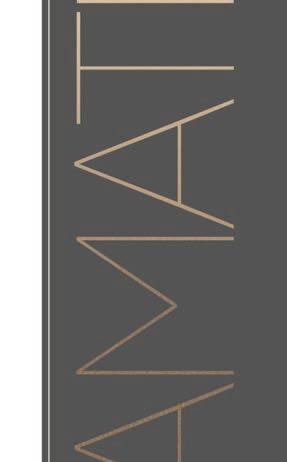

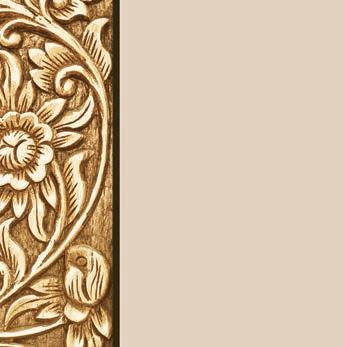
Champion and Reserve wins from U.S., Mid Summer, Canada and Youth. Based o AHA & Canada’s National Championship Supplied Results at end of show
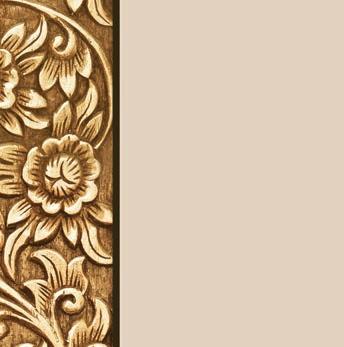
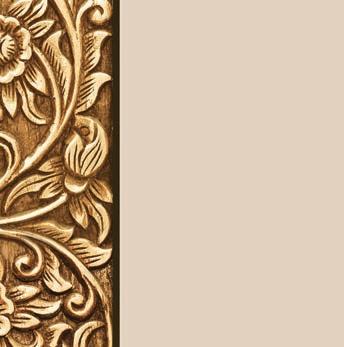
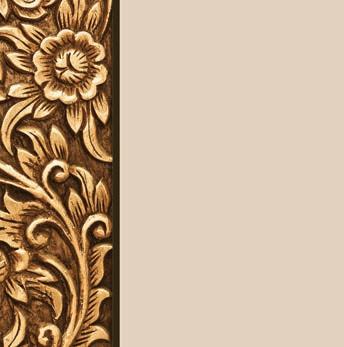

























by number of wins
1. Montibella SS 4 championships
PA Madelyn 4 championships
2. Whiskey On You DLB 3 championships, 1 reserve
3. Hendrixx WB 3 championships
4. DF Khontraban 2 championships, 1 reserve


5. CPH Sir Elton Khan 1 championship, 2 reserves
Shacago PGA 1 championship, 2 reserves
6. CPH Belle Starr 2 championships
Fixations Khash 2 championships
Gin J 2 championships
Khohinoor MW 2 championships
Polimar 2 championships
Who’s Shaken Now 2 championships
Wiskey In e Jar 2 championships
by number of wins
1. Montibella SS



Owner
Cole Reser
Lisa Blackstone
Shamrock Farms LLC
Richard & Andrea Martoglio
Sarah Boothe
Brooke or Larry Bellville or Barb Beaudoin
Michelle & Hannah Rasmussen
Calli Kruger & Nicole Cotton
Natalie Gaylord
Holly Connaker
Marta Wasiak
Rocksanne Pieters
Ava Peterson & Kaitlyn Larson
Leslie Mohr
Owner

4 championships
PA Madelyn 4 championships
2. Hendrixx WB 3 championships
3. DF Khontraban 2 championships, 1 reserve
4. Shacago PGA 1 championship, 2 reserves
5. Khohinoor MW 2 championships
Polimar 2 championships
6. Volturi 1 championship, 1 reserve
Tobruk MVA 2 reserves
Vera Wang 2 reserves

Cole Reser
Lisa Blackstone
Richard & Andrea Martoglio
Sarah Boothe
Michelle & Hannah Rasmussen
Marta Wasiak
Rocksanne Pieters
ISRA Arabian
7. Khanrad ZA 2 reserves e Zurek Family
Karen Kelder
Franklin Farm LLC


by number of wins

2. CPH Sir Elton Khan 1 championship, 2 reserves
3. CPH Belle Starr 2 championships
Fixations Khash 2 championships
Gin J 2 championships
Who’s Shaken Now 2 championships
Wiskey In e Jar 2 championships
4. Bluer an Blue J 1 championship, 1 reserve
CPH Superstarr 1 championship, 1 reserve
Owner
1. Whiskey On You DLB 3 championships, 1 reserve Shamrock Farms LLC
Brooke or Larry Bellville or Barb Beaudoin
Calli Kruger & Nicole Cotton
Natalie Gaylord
Holly Connaker
Ava Peterson & Kaitlyn Larson
Leslie Mohr
Chelsey Perez
Stephanie Barris
Platinum Perfection 1 championship, 1 reserve Ashley Reimer-Carpio
Poco Chips SS 1 championship, 1 reserve
RB Cowboy Poetry 1 championship, 1 reserve
e Cool Kid SF 1 championship, 1 reserve


Flois or Cindy Burrow
Shawna Leson
Shamrock Farms LLC


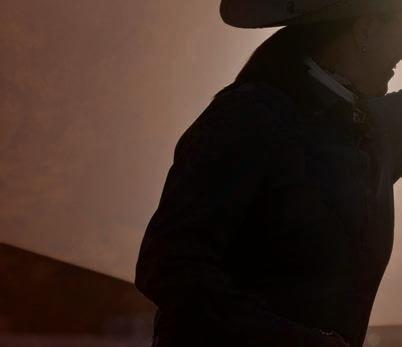








Every Day Is A Good Day When You Ride.
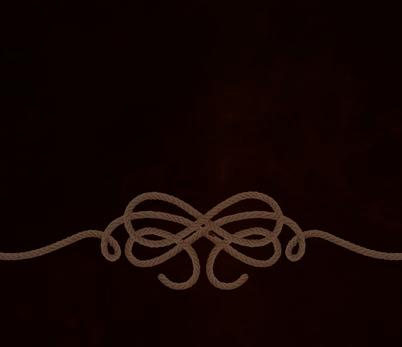


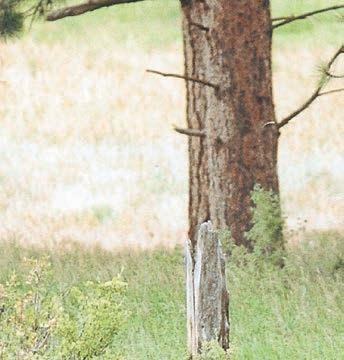


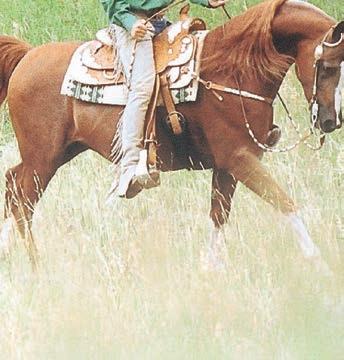

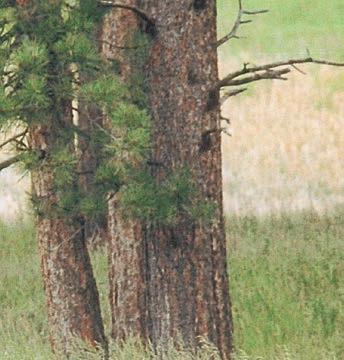

by CHRIS CULBRETH

As is typical with any treatise within a speci c equestrian discipline, it is important to understand the origins, evolution and direction of a particular specialty. ough most equestrian activities have a common heritage, it is valuable to trace the path it took to get us to the current form it has today. Once we have discovered the origins and history of equestrian sport, the journey from origination to evolution and on to what we recognize in today’s show arena, speci cally western, will have greater meaning.
It was with Spanish settlers beginning in the 1600’s that horses were reintroduced to the Americas by the Spanish Conquistadores. Nearing the 1700’s, new riding styles began to evolve. Prior to that, the Conquistadores rode in strict adherence to the style they inherited and adapted from the Moors of North-Western Africa. As cattle ranching began to take hold, Spanish Vaquero (cowboys) riding techniques and equipment began to evolve into an early version of “western riding” we see today. It was obvious that the European style of ranching would have to be adapted to work in the wide-open spaces and to improve how they would handle the larger and more hardy type of cattle they would be working with.



As horse and cattle spread throughout what is now known as the “American Southwest,” horseman such as the Spanish/Mexican Vaqueros and the Native Americans, all began to adapt their styles and use of their horses to suit their needs. e everyday tasks required by the early Vaqueros is what became the foundation for western type competitions we see today.
Native Americans developed a deep connection with their horses and emphasized an extreme responsiveness from rider to horse. is included responsiveness to both leg, hand and voice commands.
e Spanish/Mexican Vaqueros developed a version of the western saddle we see today. ese horsemen developed a heavier saddle that distributed the rider’s weight more evenly over the horse, a higher cantle and pommel and most importantly, the saddle horn. Earlier versions of the horn were much atter and wider than what we see today but were used in conjunction with the lasso and proved to be highly valuable for working with cattle.


Not to be forgotten are the “cowboys,” of Florida and Georgia. During the 19th Century C.E., cattle ranching was becoming a vital part of the American Southeast’s economy. e rugged cowboys of this region were known as, “Cowmen,” and “Cow Hunters.” ey utilized their horses, dogs, cow whips and occasionally the lasso to do their work. e type of cattle they were working with were typically smaller than those of their Southwestern counterparts.
Following the Civil War, various changes were made to the “American Western Saddle. One such adapted saddle was known as the “Mother Hubbard Saddle.” It was widely used by the cowboys of Texas. It was a lighter weight version of the “Vaquero,” saddle. It was much less ornate and more suited to working in the dense chaparral (brush) which was prevalent in the area. Meanwhile, the Vaqueros in what is now recognized as California were busy making their saddles more ornate, they often featured intricate tooling and embellishment with silver pieces. is brings us closer to the western saddles we see today.

Various other regions of the American west were also adapting the western saddle to t their needs, eventually all adaptations leading to the styles of saddles current horseman are utilizing. Even to this day, expert saddle makers such as, Dale Chavez of Temecula, California are re ning, improving and enhancing the usefulness and beauty of the saddles they are making.


Most attire and equipment used in today’s western competitions lend their heritage back to the Vaqueros. One unique piece of attire which is mandatory in most western competitions are chaps. Chaps originated from the Spanish, “aramas,” or “leg shields.” ey were designed to protect the rider’s legs from shrubs, branches and weather. Styles include shotgun, batwing, woolies and chinks (derived from the Spanish, chincadores). e word chaps (pronounced, shaps) comes from the Spanish word, “chaparro,” or “chaparral,” in English.
Eventually, these cowboys, of the American Southwest, mostly young single men who worked the various cattle ranches, would perfect their cowboy skills, such as roping and bulldogging. ey would often take these skills into competitions.
is brings us to the contemporary western pleasure horse. ese horses still lend their origins to the working western style of horse. But the emphasis on pleasure competitions is based on the attributes that would make a horse a true pleasure to ride, not just while working on a ranch but also suitable for basic travel and recreation. ese horses must be a true “pleasure to ride.”


During competitions, emphasis is placed on the horse’s smoothness, responsiveness, adherence to proper gaits and movement, and a calm and con dent attitude. Horses are judged at a more collected gait then that of the English style of horses. ey demonstrate the walk, jogtrot, lope and in open classes, the hand gallop (this is an extended version of the lope but shows a signi cant lengthening of stride, while still remaining within the control/hands of the rider). It is paramount that horses perform relaxed and with a free- owing stride and balanced correct motion. Horses must be properly conformed and carry a natural head and neck carriage. is carriage should inherently lend itself to the conformation and comfort of the horse. e head and neck position should not be signi cantly behind the vertical so as to impede the horse’s proper movement or comfort. Conversely, the head should not be so far in front of the vertical to appear resistant to the bit or lack proper control from the rider.

e pleasure horse’s performance must be consistent. A horse’s “performance topline,” is the outline from the horse’s nose, over its head, neck, back, croup and tail. is “topline,” should remain relatively consistent throughout the horse’s demonstration of the various gaits. ey must demonstrate consistency, rhythm and cadence in their movement.
Horses must also exhibit a good attitude. e horse must appear to be pleasant and willing to accept the rider’s commands. eir eyes should appear calm but not dull, and the horse should not appear sluggish or dis-interested. For a western pleasure horse to prevail, they should successfully represent all these traits.



All of the rules governing our western pleasure classes are in the current United States Equestrian Federation (USEF) Rule Book. Any person interested in competing at Arabian competitions is encouraged to download the rule book or available app from USEF.
Judges are mandated to only call the gaits listed in the rules. e “To be judged on,” criteria are the main metric which judges must use and depending on the division (open/amateur/junior horse), the order of importance is paramount in evaluating the horses. Example: in open western pleasure, manners is listed rst. erefore, manners are the most important factor and must be given the highest value when o ciating. Given the lowest priority in the open classes is attitude. However, a horse’s attitude is still important and must be evaluated.


Suggested percentages for each division are also o ered to judges to quantify each individual standard (using the open once again for example: Manners-35%, Performance-30%, Substance-15%, Quality-10%, Conformation-5%, Attitude-5%).
To understand the nuance of each of the judging criteria, de nitions of each individual judging criteria are as follows:
Manners. e conduct or behavior of the horse as it performs. e ability to be willingly guided and controlled with light contact. is includes the horse’s acceptance of its surroundings and other horses in the arena.
Performance. e execution and accomplishment of a required task. is would include movement and carriage.
Substance. e perception of strength and power to do any required task for an extended amount of time with minimal e ort.
Quality. e degree of athleticism required to appear e ortless and with nesse. is requires condition, presence, carriage, balance and excellence. A quality horse is pleasing to the eye.



Conformation. e correct structural form as it relates to the function of the horse’s discipline.
Attitude. e horse’s mental approach to the entire discipline. A horse’s attitude is re ected in its ears, tail, mouth and way of going. A desirable way of going is re ected in a soft eye, relaxed back, a willingness to go forward comfortably, and an overall pleasant appearance.
Suitability of horse to rider. e horse’s appropriateness for that rider for that discipline of which it is competing in. It is the horse’s obedience to the rider with safety being all important.
We have discussed at length what a good western pleasure horse should do. Now we can discuss a few of the things that should not be represented by our horses.
ere has been much discussion and consternation regarding, “draped reins,” in our pleasure classes, and the USEF rule book is both clear and slightly nuanced.


AR147.2 Light contact with horse’s mouth must be maintained at all gaits.

AR149 Light contact should be measured by a horse’s response to the rider’s hands, seat and legs and not merely the tension in the reins. However, an excessively draped rein is just as undesirable as an extremely tight rein.
What are our judges taught? Draped reins are a very small portion of the overall calculus of the western pleasure class. We often see winners that have exhibited draped reins to various degrees. However, proper judging mandates the use of the criteria in the correct order of importance. If the demonstration of a draped rein is leading to a shortfall in any of the class criteria, then the horse’s evaluation will su er accordingly.
We often hear, “ at judge just likes a lot of draped rein and rewards it.” Often the truth may surprise you. e judge may have placed the horse rst despite the draped rein. e winner may have outshined its competition in the class speci cations and the



drape had nothing to do with the result. e bottom line is that if the horse is appropriately and positively responding to the rider’s subtle movements of the rider’s seat, hands, legs and/or voice, then that is the horse’s “light contact.” If a rider is on a draped rein and frequently reels in the reins to communicate with the horse, or has no communication at all, then that is not that horse’s “light contact,” and should be judged accordingly.
Another area of concern for good competing and o ciating is the carriage of our horse’s tails. Over the past few decades, many horse associations have been struggling with the appearance of “unnatural tail carriage.” Our breed has not been exempted from this dilemma. Our rules clearly state:
AR105 Natural Arabian Appearance


a. No horse may compete in a class in the Arabian division with a tail carriage that has been altered in any manner or by any means.
All Arabian judges are expected to be aware of this and to take the appropriate actions as written in our rules. is has and continues to be included in the “Judges Points of Emphasis.” is and other important issues on the “Points of Emphasis,” are prepared by and made available through the AHA Judges Commissioners o ce and prepared by the AHA Judges and Stewards Education and Evaluation Commission.
Judges are taught not to penalize horses for using their tails in a normal way. is may include a slight movement of the tail when being asked to perform a di cult task or while being crowded by another horse. is would be similar to the way a horse might use its ears. A good judge will be able to recognize the di erence between a horse’s subtle communication verses an overt discontentment.


Horses behind the bridle or are too low in the poll, we hear and read a lot about as well. A simple metric often sited with derision is, “that horse is behind the vertical and it still placed.” is is something that pretty much anyone can see. But what exactly does it mean? Quite simply, if you draw an imaginary straight line from the horse’s forehead to the front of its nose and onto the ground, that line should be either perpendicular to the ground or tipping forward away from the front of the horse’s feet. Is this a fair way to evaluate a horse’s headset? Possibly. However, I would argue that given the varying conformational traits of our horses, that this method of evaluation is too simplistic and naive. Proper carriage while in motion dictates that a horse should be moving uphill and engaging its hindquarters. It should be rounding its back and elevating its shoulders. With its eyes and ears, it should be looking up and forward. is should be done to a degree consistent with the discipline it is competing in. If a horse is comfortable and successfully performing all of these tasks and appears to be slightly more in bridle then some of the others, then that is consistent with its conformation. In no way am I advocating for a horse to be ridden “over bridled,” or that any horse should ever be ridden in an uncomfortable or abusive position. I just feel that to properly evaluate our horses, we need to take a deeper look. If a horse is most comfortable and capable of performing its tasks with its poll 1” above its withers and its nose 2” in front of the vertical, then great. If that horse better ts within the class speci cations than any other horse in the class, then that horse should prevail. More often than not, a horse with its poll 1” below its withers and behind the bridle cannot display proper movement and carriage and hopefully will not carry the day.



Ultimately, judges must adhere to the adjudication of proper movement in all divisions. at means that the walk must be a four beat-gait at all times. A jog or trot must be a two-beat lateral gait at all times. A lope or a canter must be a three-beat gait at all times. Any deviation from this means that the horse has failed to perform the gait and must be severely penalized accordingly. Regardless of a draped rein, regardless of being a beautiful horse of the highest quality, execution of each gait is a major component of performance and is 30% of its evaluation.

Trends come and go. It is important as horseman, that we ensure the future of all horses. Good horsemanship is not something we do occasionally, it is a way of life. To ensure the future of our sport and to keep our show ring viable, we must adhere to our judging standards.
Chris Culbreth has been training horses professionally for 45+ years. He and his clients have garnered many National and Reserve National Championships in English, Western, Hunter Pleasure, Park, Show Hack, Driving and Equitation. Beyond Culbreth Equine Training & Management, Chris’ level of experience in the Arabian horse community encompasses more than just showing horses. It has always been important to Chris to get involved on a higher plain and ensure the future of our Arabian horse. He is a licensed judge and o ciates widely all over the U.S. and Canada, as well as South Africa, Brazil and Australia. Chris and his wife, Michele live in Scottsdale on the ranch n


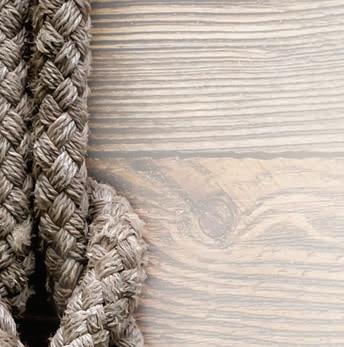
Champion and Reserve wins from U.S., Mid Summer, Canada and Youth (Cutting, Reined Cow, Reining, Western Trail, Herd Work, Working Cow and Ranch Riding) | No Equitation Based o AHA & Canada’s National Championship Supplied Results at end of show


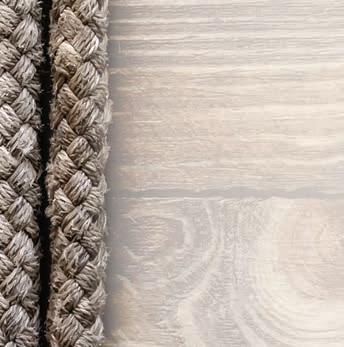


















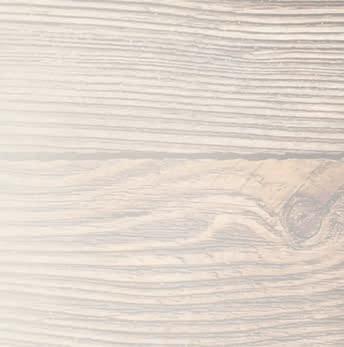






by number of wins
1. WCF Mark Me Up


Owner
9 championships, 3 reserves Delaney or Roxanne Haight

2. M Gettin Er Dun 3 championships, 7 reserves Mignon or Greg Stetman
3. TR Butch Cassidy 5 championships, 3 reserves Bonnie or Brooke Bunker
4. Werdyct 6 championships, 1 reserve Angela & Hailey Mannick
5. My Lucky Shamrock 6 championships Tracy Dowson
6. Khredential 3 championships, 3 reserves Steve or Karen Freeman
Nspiring Forthe Top 3 championships, 3 reserves Ingrid Bentzen
7. My Great Escape RA 2 championships, 4 reserves Jami Balint
8. Bringin Sexy Back 4 championships, 1 reserve Jackie Pakula SR Ultra Shine 4 championships, 1 reserve Velda Peach
by number of wins



Owner
1. WCF Mark Me Up 9 championships, 3 reserves Delaney or Roxanne Haight
2. Werdyct 6 championships, 1 reserve Angela & Hailey Mannick
3. Khredential 3 championships, 3 reserves Steve or Karen Freeman
Nspiring Forthe Top 3 championships, 3 reserves Ingrid Bentzen
4. Legacy Fire Dammage 3 championships, 2 reserves Kathie Williams-Baity
5. C Pistoleropete 3 championships, 1 reserve Gary Ferguson Zee Kahili 3 championships, 1 reserve Lee Cary-Chase
6. Baikals Platinum 2 championships, 2 reserves Robin Hardy
7. Rumour Haz It 1 championship, 3 reserves Mack or Dulcie Elwood
by
1. M Gettin Er Dun


Zee Triple Zee 1 championship, 3 reserves Trevor Gerardi-Miller


Owner
3 championships, 7 reserves Mignon or Greg Stetman
2. TR Butch Cassidy 5 championships, 3 reserves Bonnie or Brooke Bunker
3. My Lucky Shamrock 6 championships Tracy Dowson
4. My Great Escape RA 2 championships, 4 reserves Jami Balint
5. Bringin Sexy Back 4 championships, 1 reserve Jackie Pakula
SR Ultra Shine 4 championships, 1 reserve Velda Peach
6. SH Imvaguelysurprised 3 championships, 2 reserves Karen Shaw
7. Chics Dig It 2 championships, 3 reserves Cassandra Dawson
Nspiredbyhollywood RA2 championships, 3 reserves Amy or Avery Reed
8. Hottimeinmotown RA 4 championships Clara or Emma Fullilove










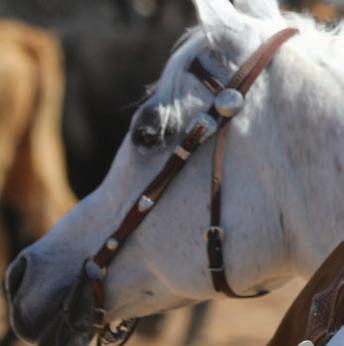



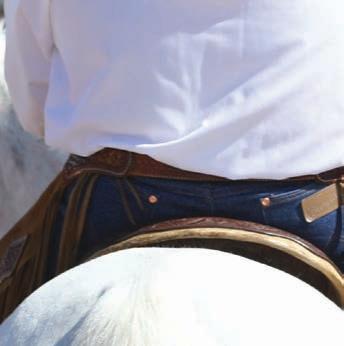
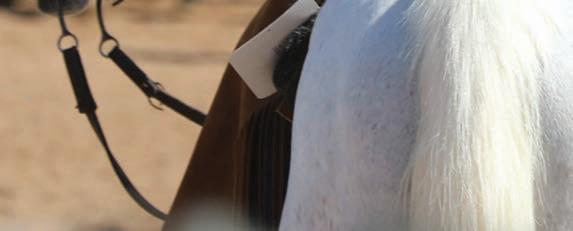

by CHRIS CULBRETH
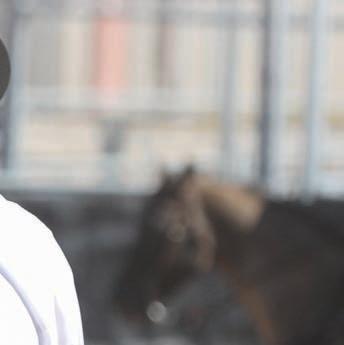
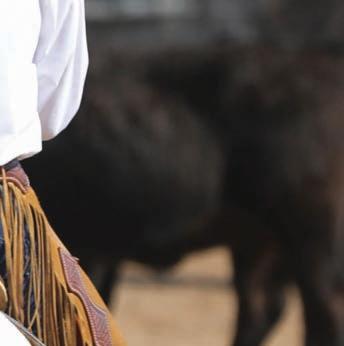
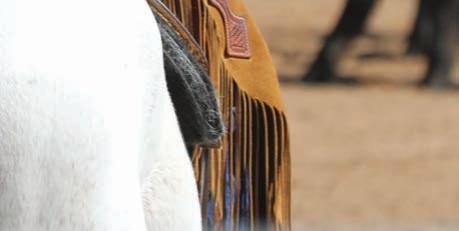



No other image evokes the heritage of the American Southwest than the cowboy and the idea of them riding across a vast cattle ranch on their horse. The Ranch Horse division is based on that exact tradition. This was the legacy left by these rugged individuals and their trustworthy mounts making them ready for any challenge or job the dynamic environment could manifest.

The horses of these intrepid horseman needed to be strong, agile and smart. They also needed great endurance and strength to prosper in this rough and often hostile environment. The Arabian horse’s heritage traces back to those of the Arabian Peninsula in the Middle East and were developed by nomadic tribesmen or “Bedouin.” They needed a horse that displayed the same characteristics of strength, agility, endurance and intelligence that the cowboys required. It is this shared evolution that makes the Arabian horse such an ideal horse for today’s Ranch Horse classes.
Ranch Horse classes are a relatively new division to the Arabian breed. These classes have quickly become some of our fastest growing events at many horse shows. It is not uncommon to see these classes surpass the numbers of competitors in other popular divisions.


Ranch classes are not the same as Western Pleasure or Reining. Yes, there are many similarities. The difference lies within the emphasis on the smooth and efficient style, as if the horse and rider were actually working on a ranch. The horse and rider work in more forward moving gaits. Horses are expected to lengthen and shorten their strides as they work through the collected and extended gaits. The headset is more relaxed. Smooth and ground covering gaits are imperative.
The Ranch Horse classes are separated into various disciplines:
1. Ranch Riding (a pattern class)
2. Ranch Trail (a pattern class over obstacles)
3. Ranch Rail (a collectively judged class on the rail)
4. Ranch Conformation (a halter class)

5. Versatility Ranch Horse (a multi-tiered class featuring a number of other class types)
6. Ranch Cutting (working cattle)
7. Ranch Cow Work (working cattle)
8. Ranch Limited Cow (working cattle, simplified)
9. Ranch Reining (running a pattern)



Our rules are located in the United States Equestrian Federation (USEF) rule book. Within our Ranch Horse rules, we are referred to the American Quarter Horse Association (AQHA) rule book and the National Reined Cow Horse Association (NRCHA) rule book. The following is a synopsis of all Ranch classes borrowed from the AQHA and USEF rule books. Note: There are certain exceptions to the AQHA rules for the Arabians. These exceptions are located within the Arabian section for Ranch Horse, within the USEF rule book*.







Ranch Riding. This class measures a horse’s ability to be a pleasure to ride while being used as a conveyance from performing one ranch task to another. The horse and rider are asked to perform a pattern that includes changes of gait, extension of gait, crossing logs and lead changes. All maneuvers should be performed as if the horse were being used on a ranch, and the horse should demonstrate a high level of training, relaxation and quality of movement in all gaits. These classes may also include cattle and other elements.

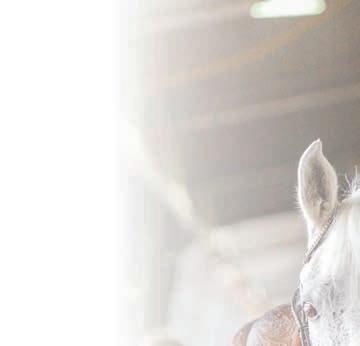
Ranch Trail. The horse and rider performing in a Ranch Trail class are asked to maneuver through six to nine obstacles that resemble the things that would be encountered during everyday riding on a ranch. The horse will be asked to walk, trot and lope during the pattern, and mandatory obstacles include riding over obstacles (such as logs), passing through a gate, backing, riding over a bridge, side-passing and dragging (open and amateur only). The horse is judged on a natural Ranch Horse appearance and credit is given for a horse that performs the pattern smoothly, with willingness and efficiency.
Ranch Horse Rail Pleasure. Ridden on the rail, this class measures the ability of the horse to be a pleasure to ride while being used as a means of conveyance from one ranch task to another and should reflect the versatility, attitude and movement of a working horse.
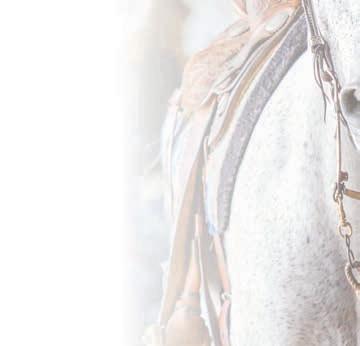



Ranch Conformation . The purpose of this class is to preserve the Arabian and Half-Arabian horse type by selecting well-mannered individuals in the order of their resemblance to the breed idea and that are the most positive combination of balance, structural correctness and movement with appropriate breed and sex characteristics and adequate muscling. The ideal Ranch Conformation horse should have a natural ranch horse appearance from head to tail.

Ranch Horse (VHS). The Versatility Ranch Horse competition promotes the athletic ability and versatility of the horse as demonstrated in six classes: Ranch Riding – Ranch Trail – Ranch Reining – Ranch Cow Work – Ranch Cutting and Ranch Conformation.


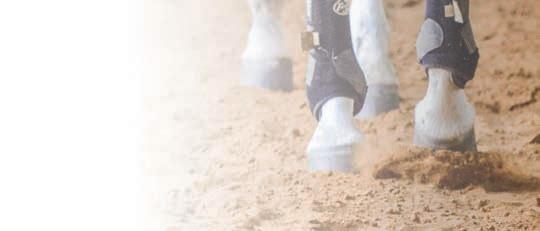










Ranch Cow Work. When it comes to the Ranch Cow Work class, riders have a choice between Ranch Cow Work or Limited Ranch Cow Work for youth and amateur exhibitors. Limited is when exhibitors are given one minute forty-five seconds to complete four maneuvers with the cow. This consists of boxing the cow; setting up and driving it down the rail to the opposite end of the arena; boxing it at the opposite end of the arena; and driving the cow back down the fence past the middle marker. For Ranch Cow Work classes, there are three parts to the class: boxing, fence work and roping or circling. Exhibitors are given three minutes to complete the class.

Note: Limited Ranch Cow Work is limited to Amateur and Youth only. Exception, Open classes may be offered at local and regional shows only. For the 2026 show season, it is scheduled to offer separate classes for open riders at all Arabian shows.
Ranch Cutting . This class is judged on the ability of the horse to work a cow by separating it from the herd and holding it to demonstrate the horse’s ability to work the cow.
Ranch Reining. This class measures the ability of the stock horse to perform basic handling maneuvers. The following is a statement of what judges are looking for in a reining horse: “To rein a horse is not only to guide him but also to control his every movement. The best reined horse should be willingly guided or controlled with little or no apparent resistance and dictated to completely.” (NRHA A. GENERAL)



What is the allure of the Ranch Horse classes over more traditional classes? Because the Ranch Horse more closely resembles every day riding along with the style and use of horses in “cowboy culture” verses the more formalized style of main ring competitions. Many riders are just more comfortable in this division. We often see riders who are new to horses or even riders returning to competitive riding after a hiatus, gravitate toward the Ranch classes. Due to the nature of the classes, riders have a sort of “cowboy comradery.” They seem to enjoy each other’s company before, during and after events.
My wife and I, after many decades in the show ring, have enjoyed delving into the Ranch Division. We both still love competing in main ring classes, however, branching out into this division has been a lot of fun. The learning curve is not anything to be worried about as everything about Ranch classes has a certain practicality to it.
*Please make sure to review all applicable rules prior to being involved in the Ranch Horse Division.



Chris Culbreth has been training horses professionally for 45+ years. He and his clients have garnered many National and Reserve National Championships in English, Western, Hunter Pleasure, Park, Show Hack, Driving and Equitation. Beyond Culbreth Equine Training & Management, Chris’ level of experience in the Arabian horse community encompasses more than just showing horses. It has always been important to Chris to get involved on a higher plain and ensure the future of our Arabian horse. He is a licensed judge and officiates widely all over the U.S. and Canada, as well as South Africa, Brazil and Australia. Chris and his wife, Michele live in Scottsdale on the ranch. n


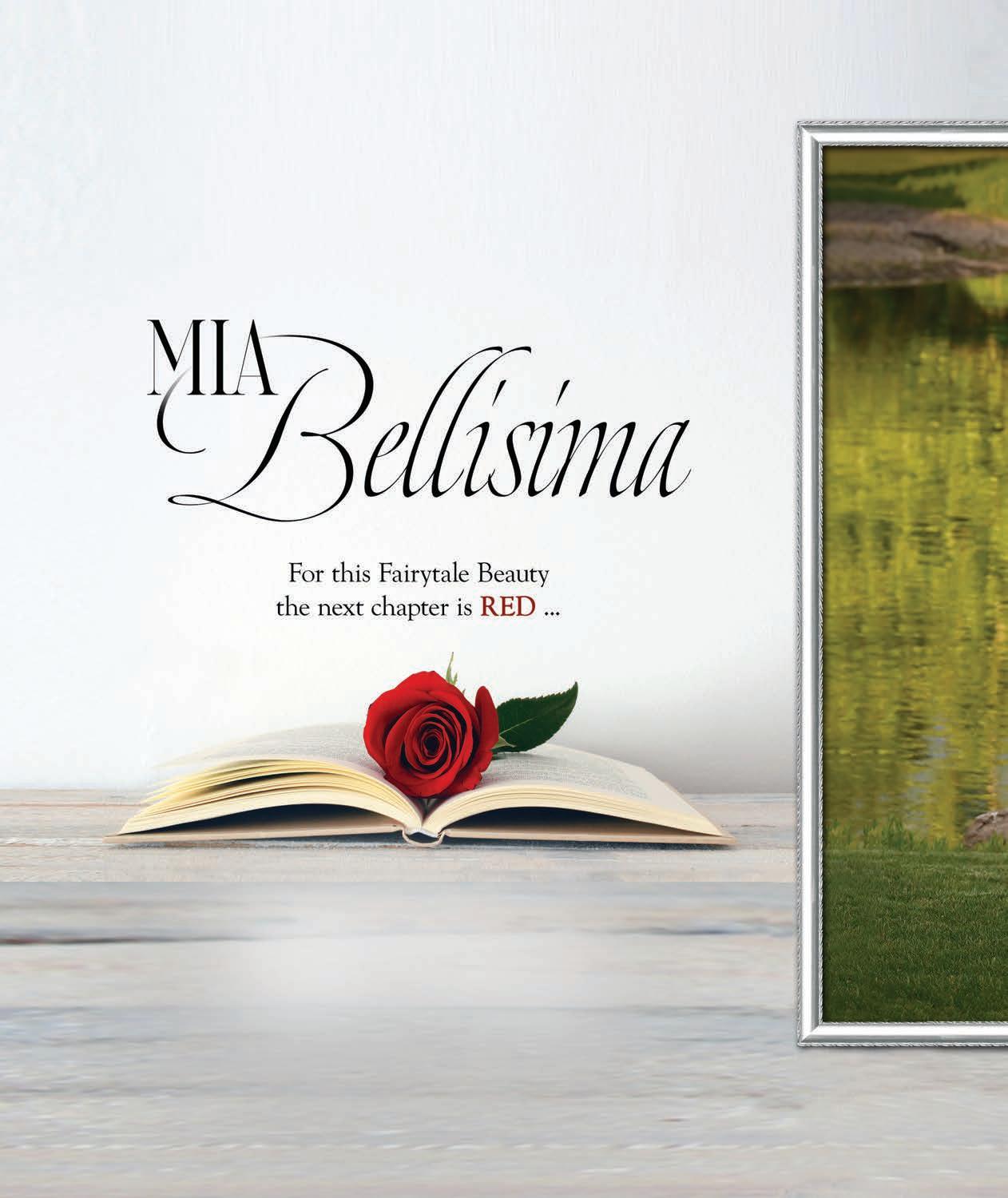
2025 U.S. NATIONAL ARABIAN WESTERN PLEASURE with Jody Strand
